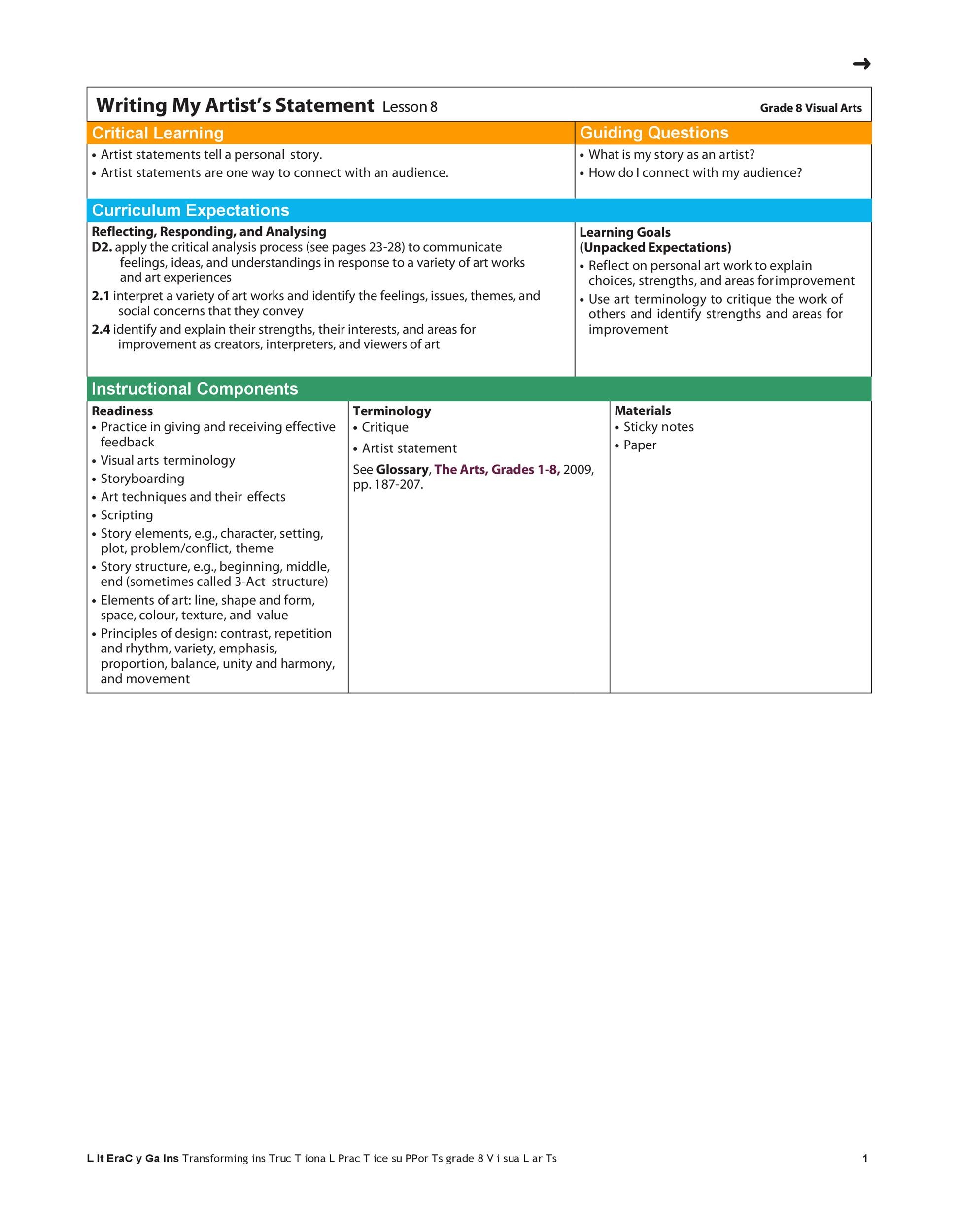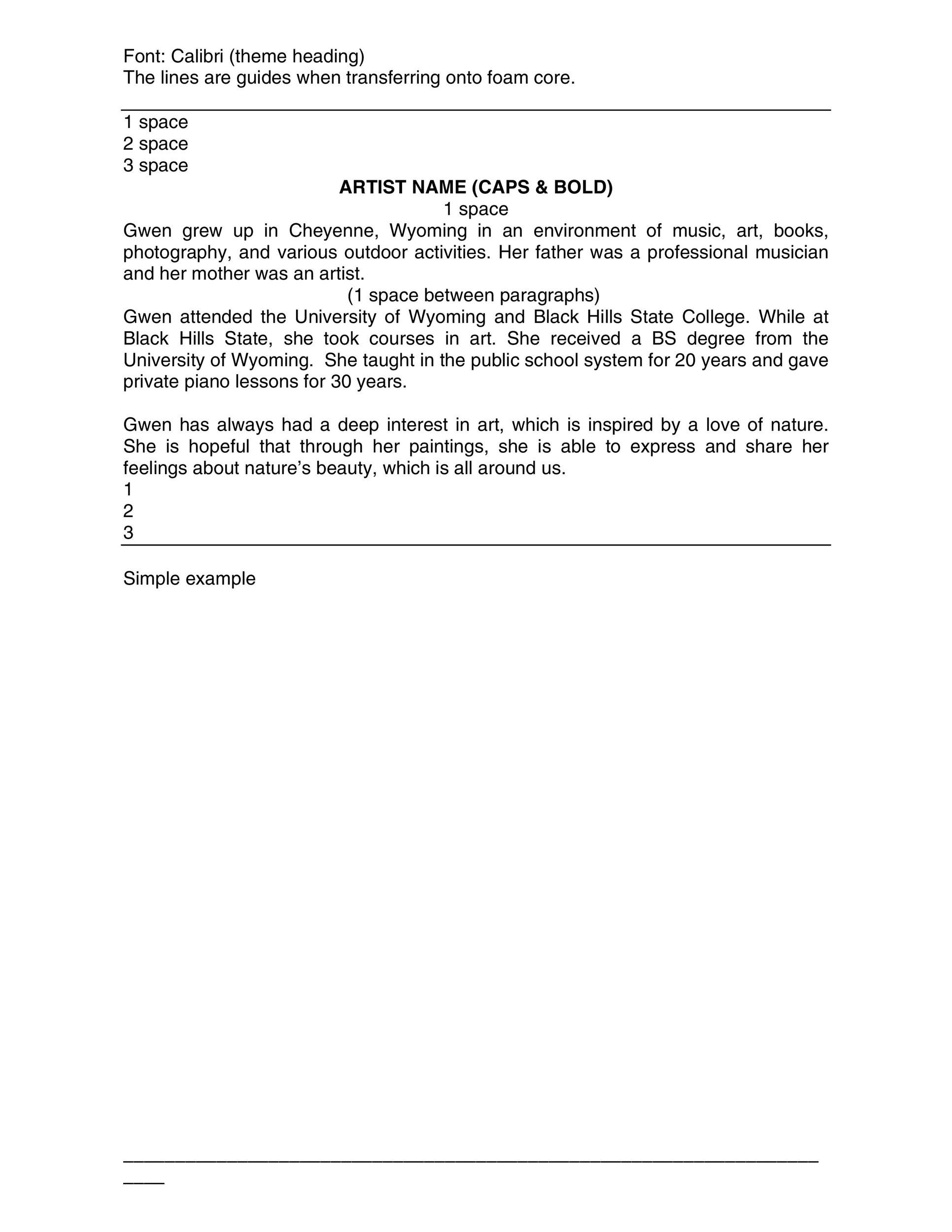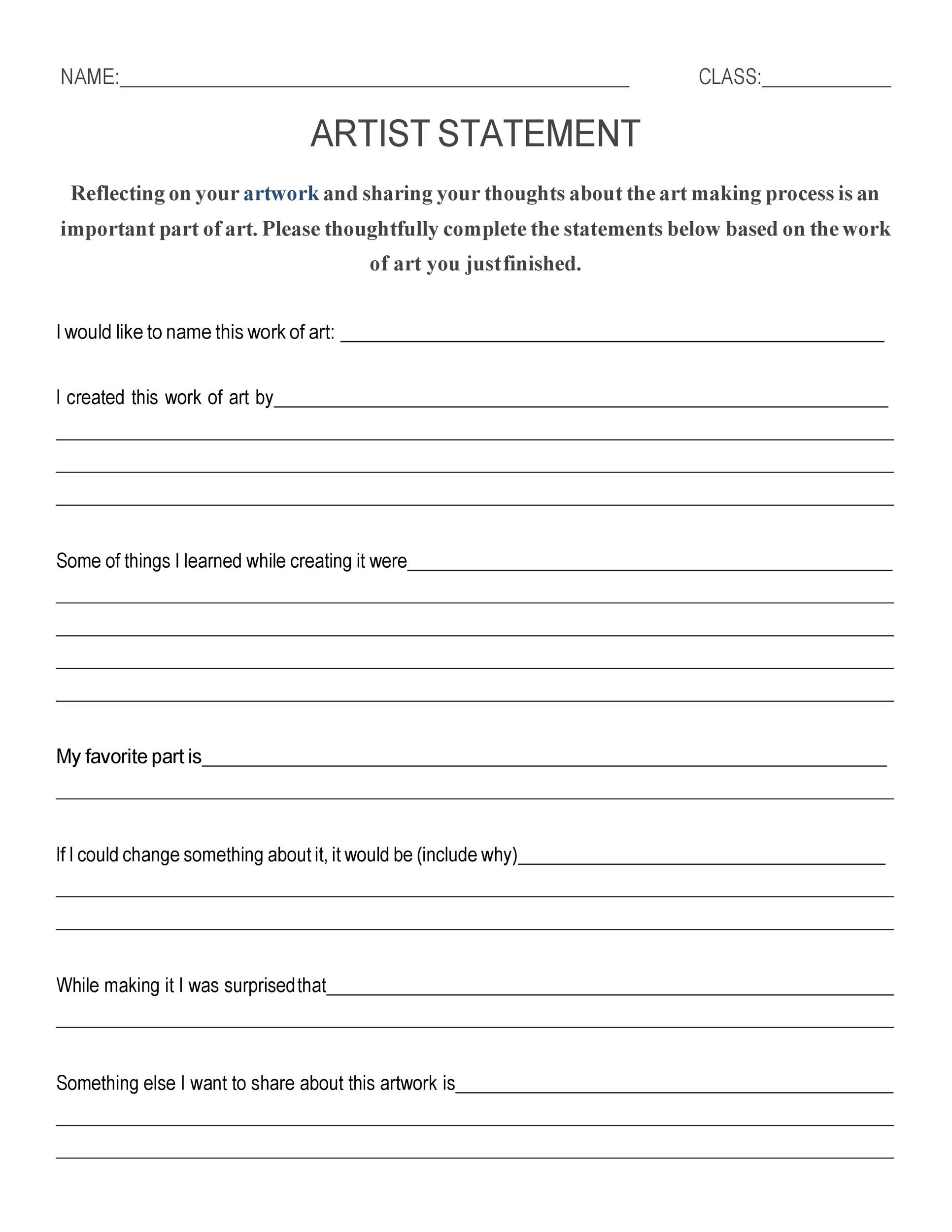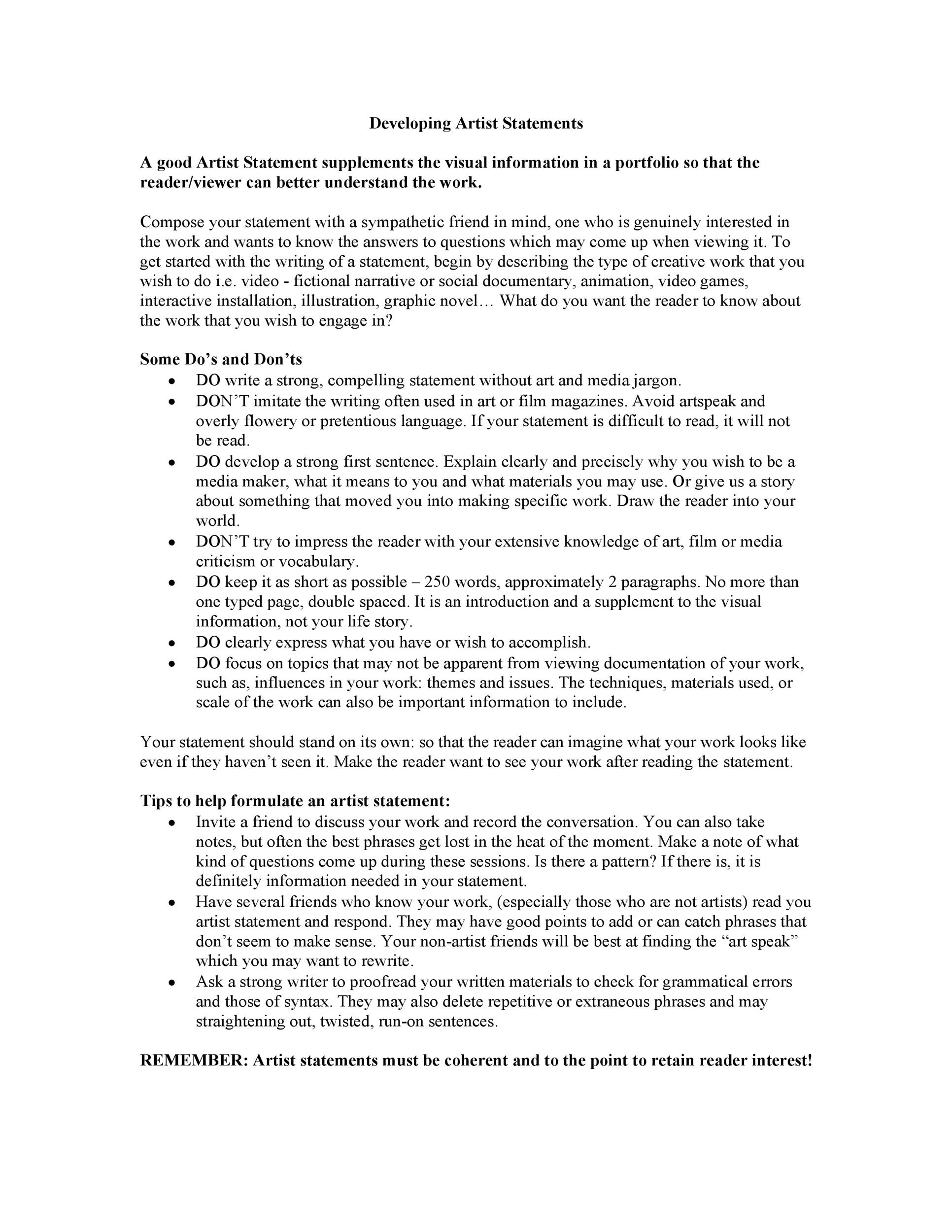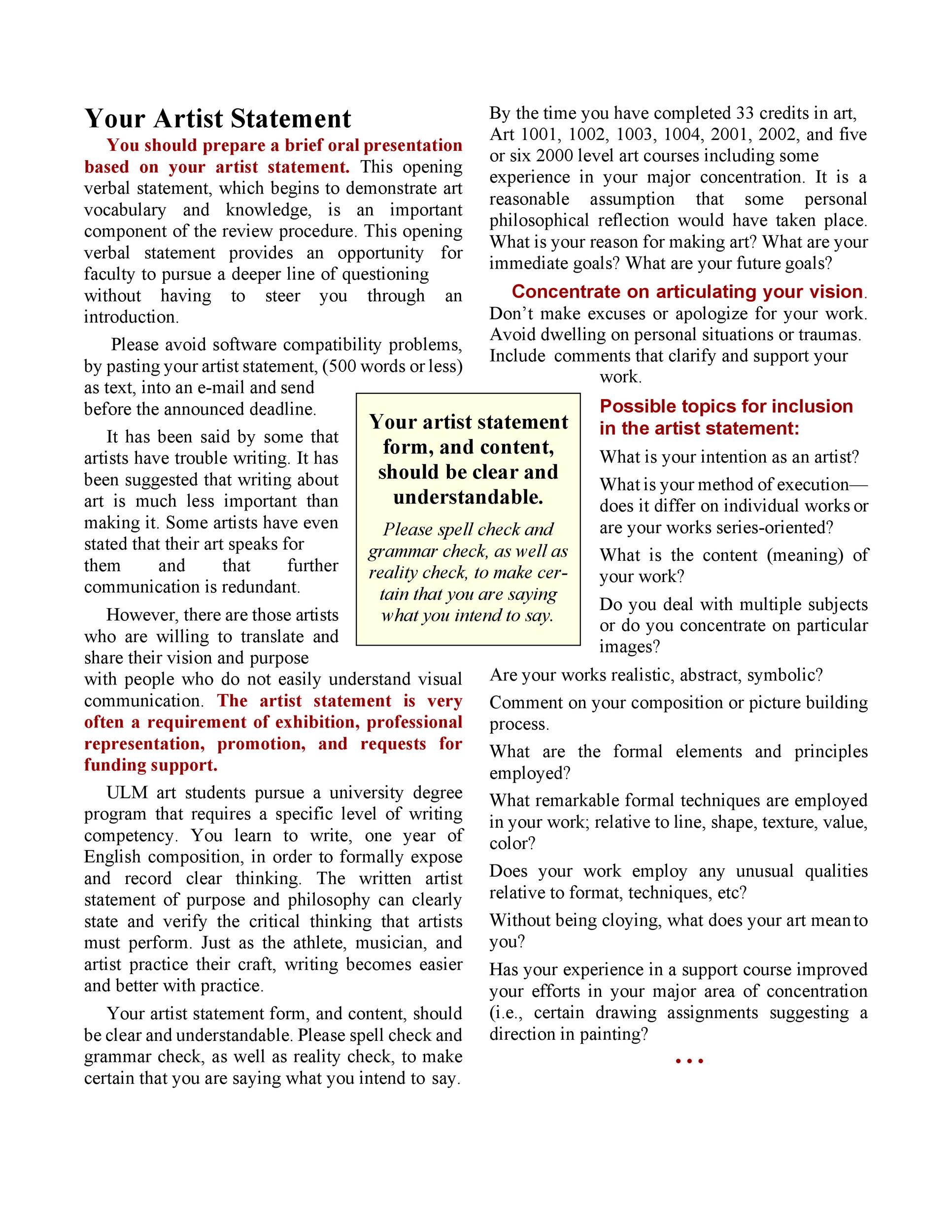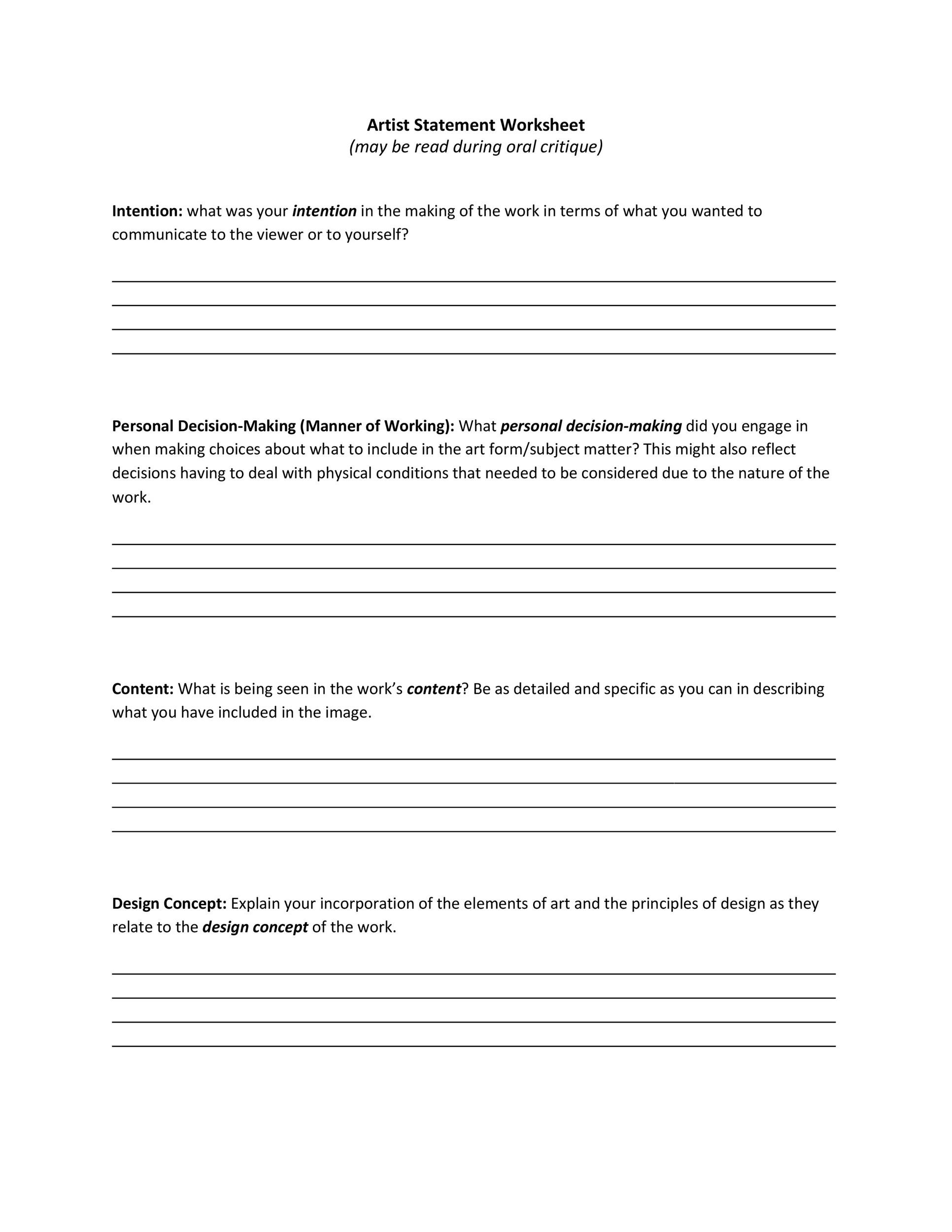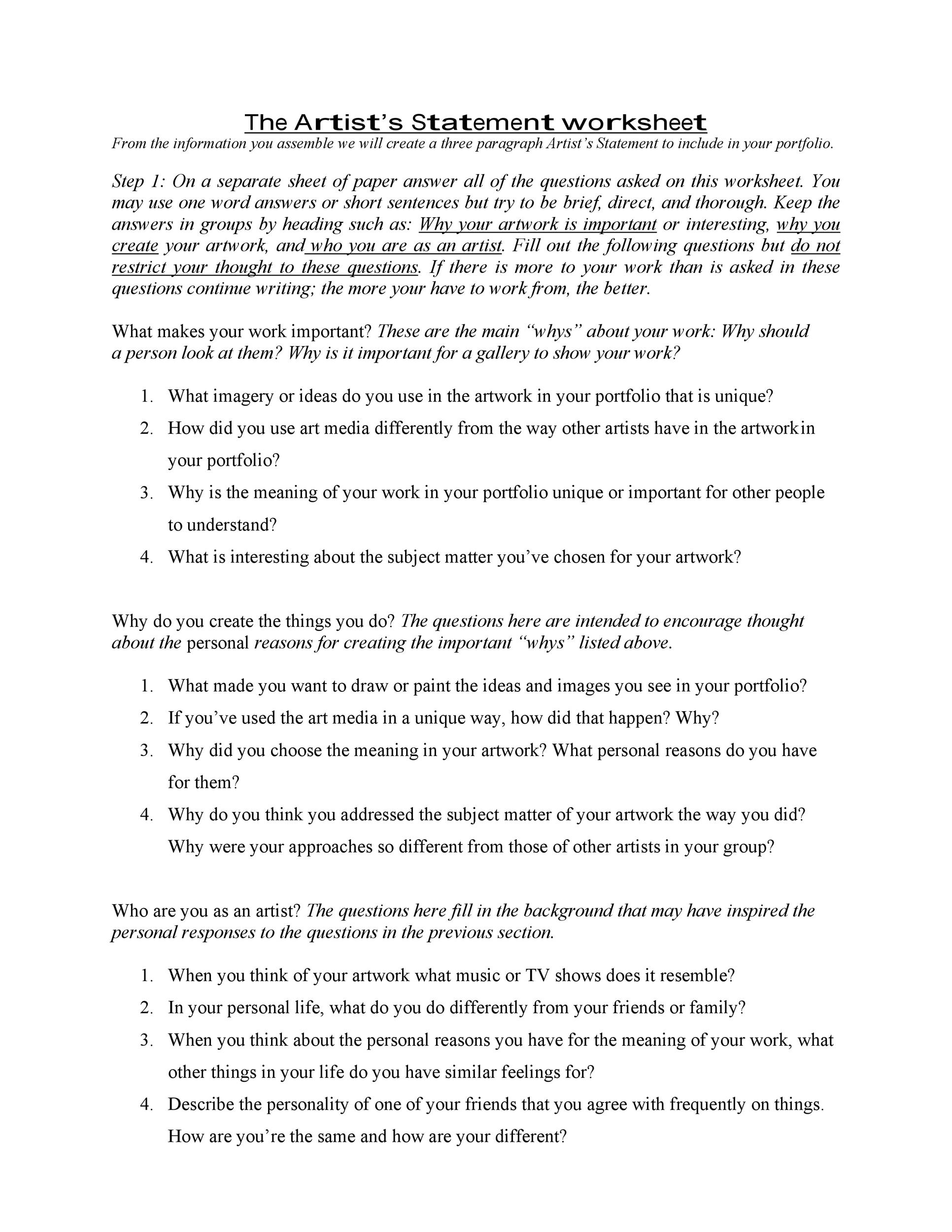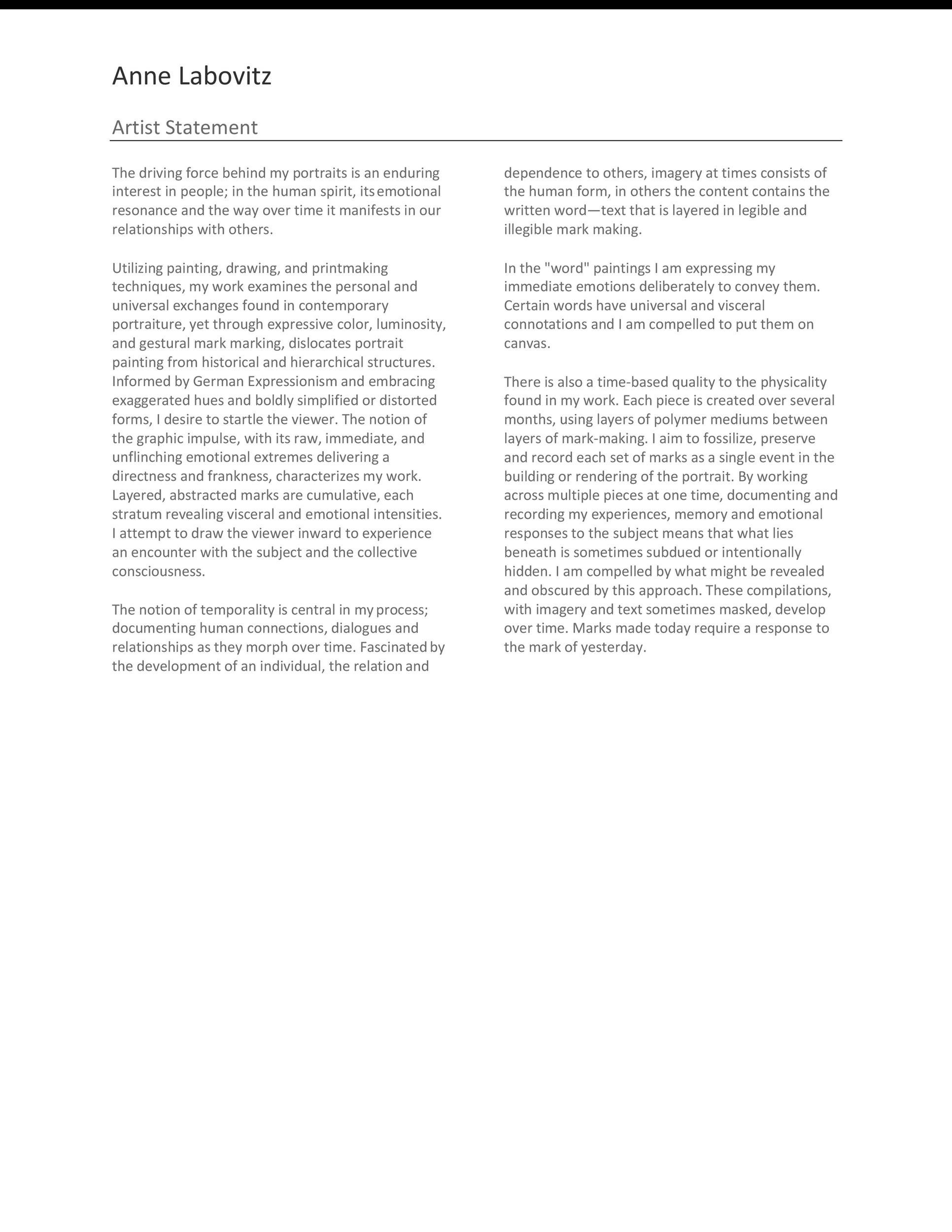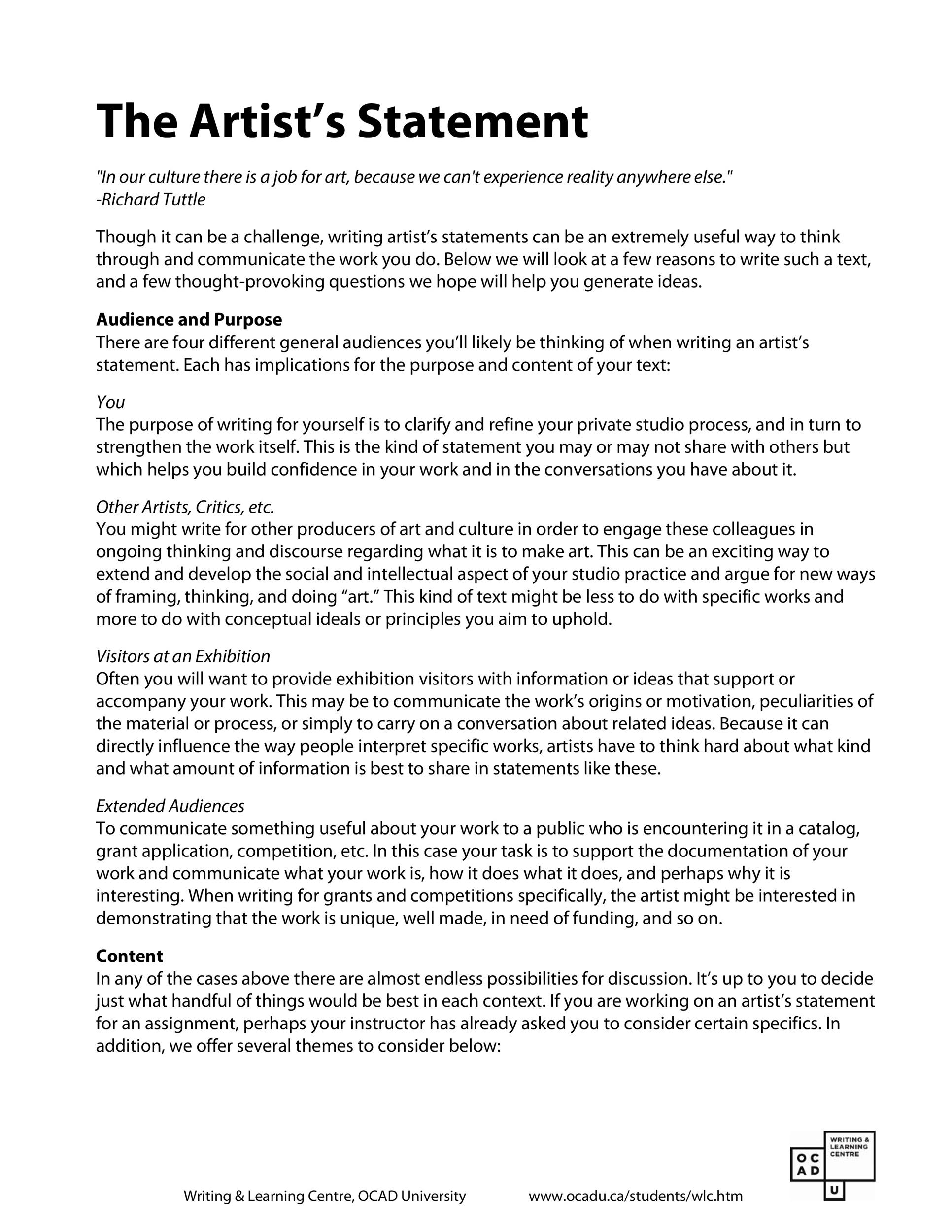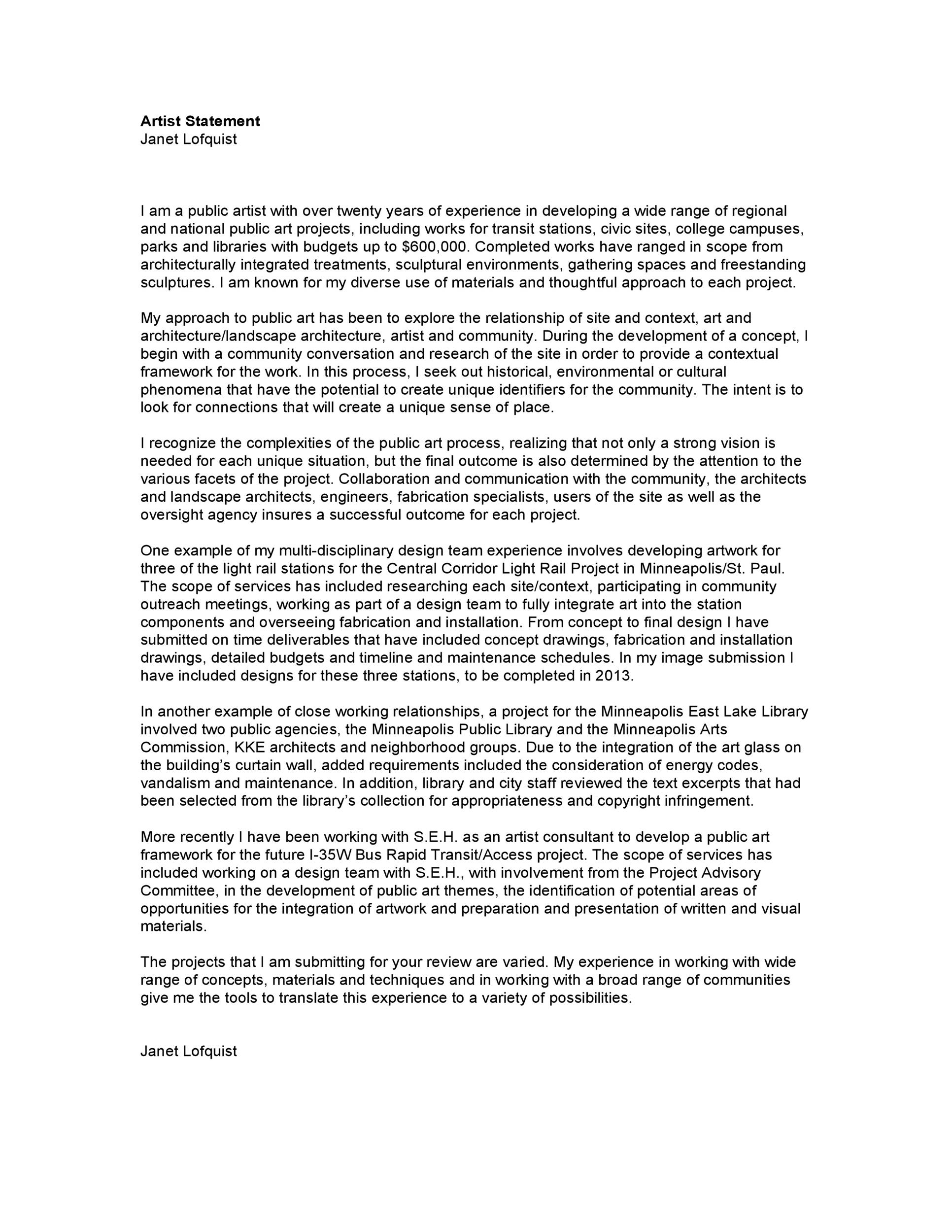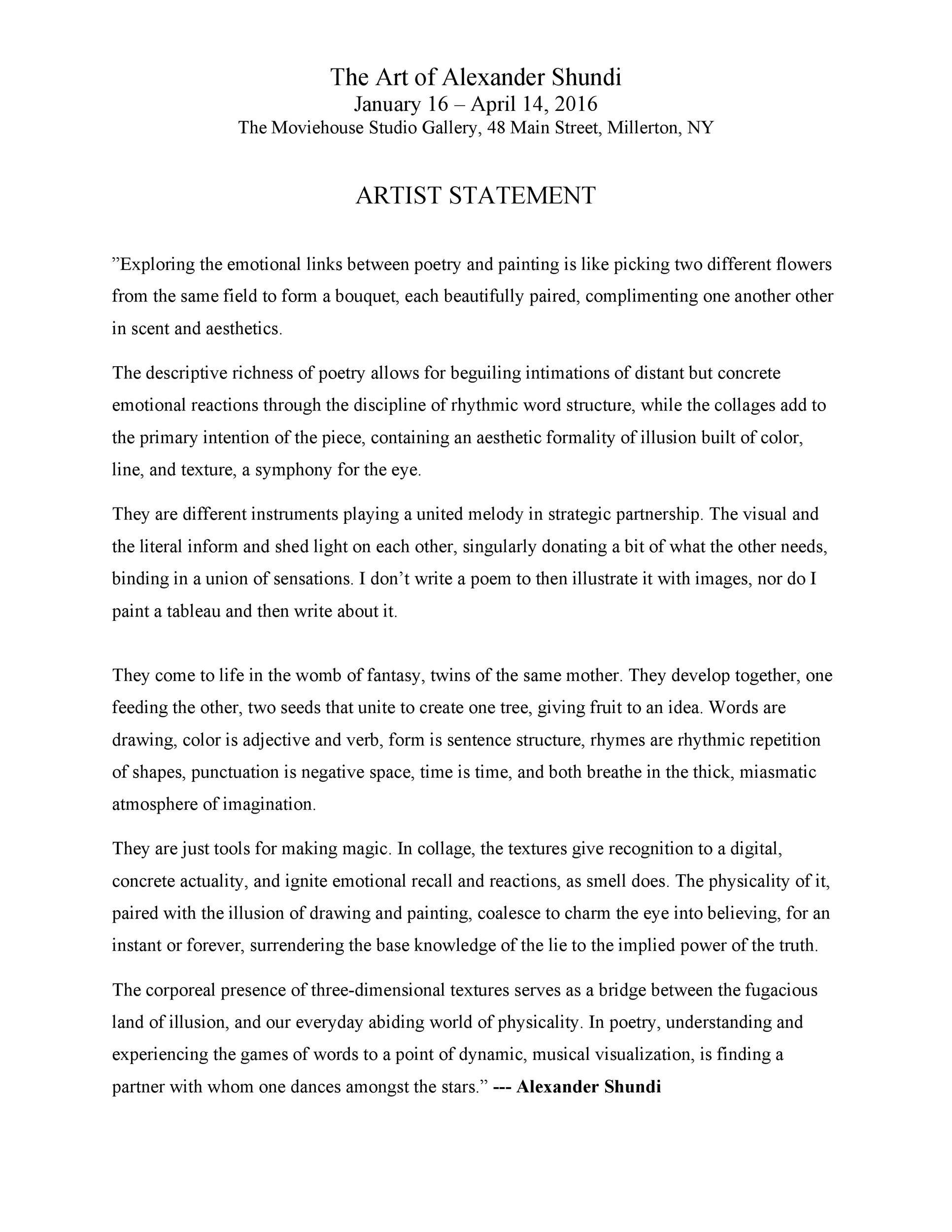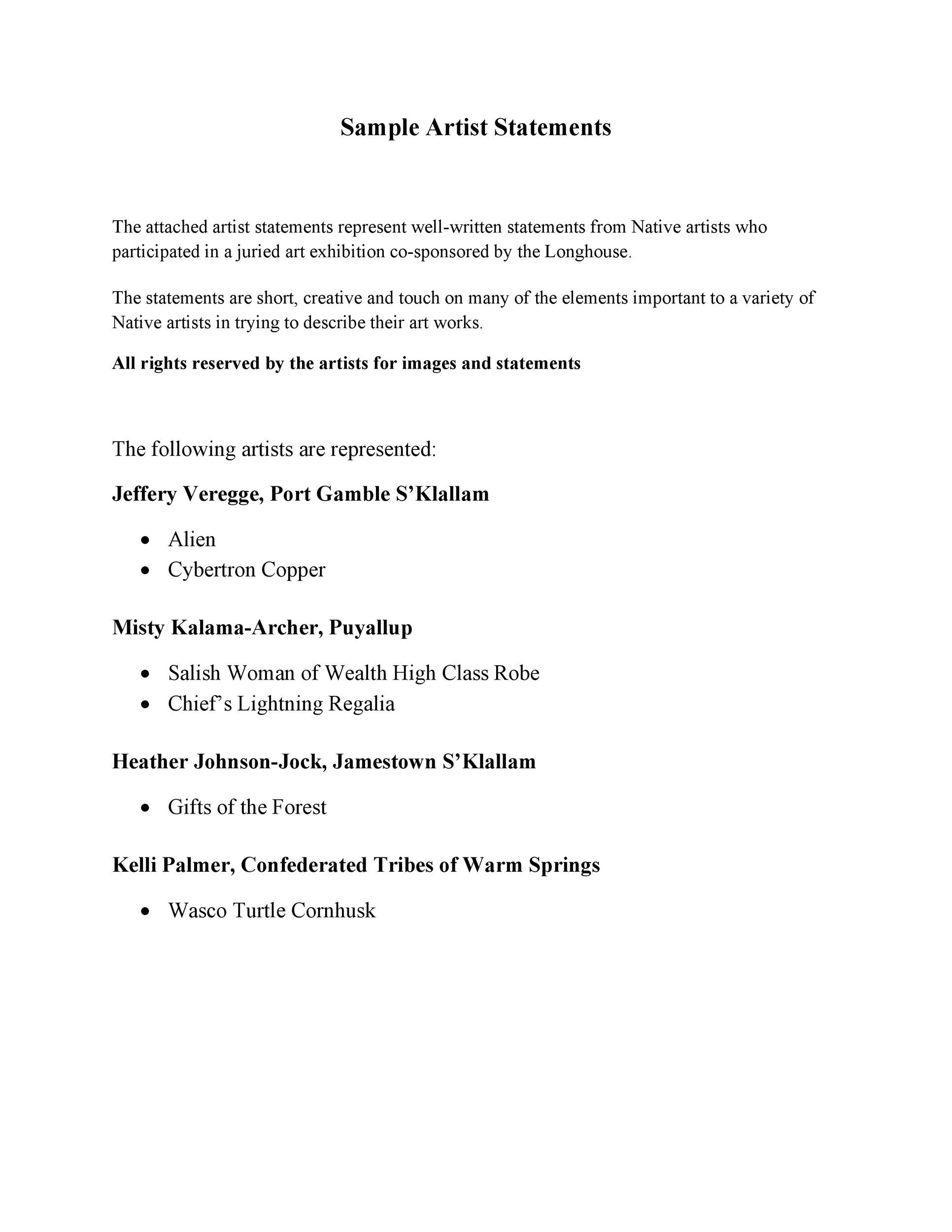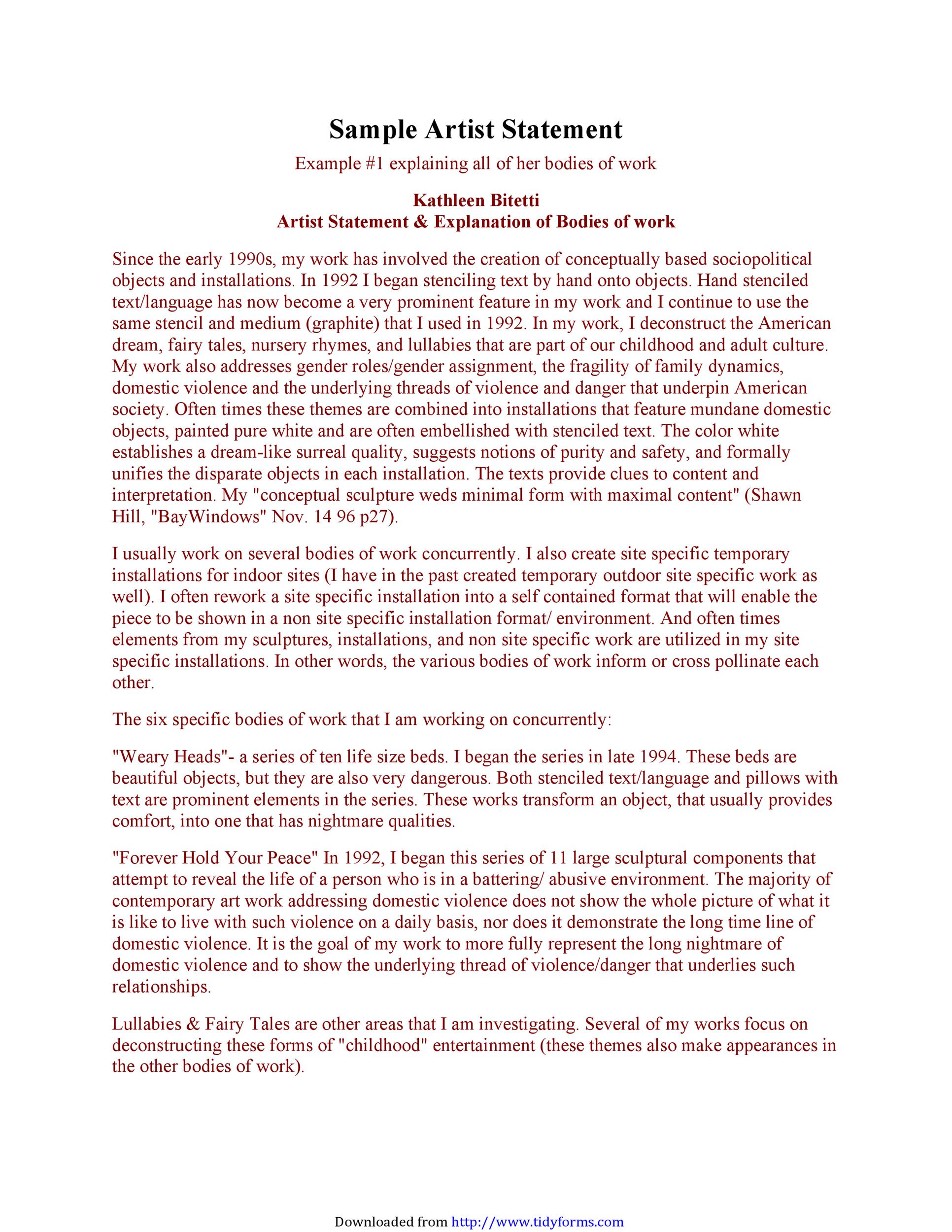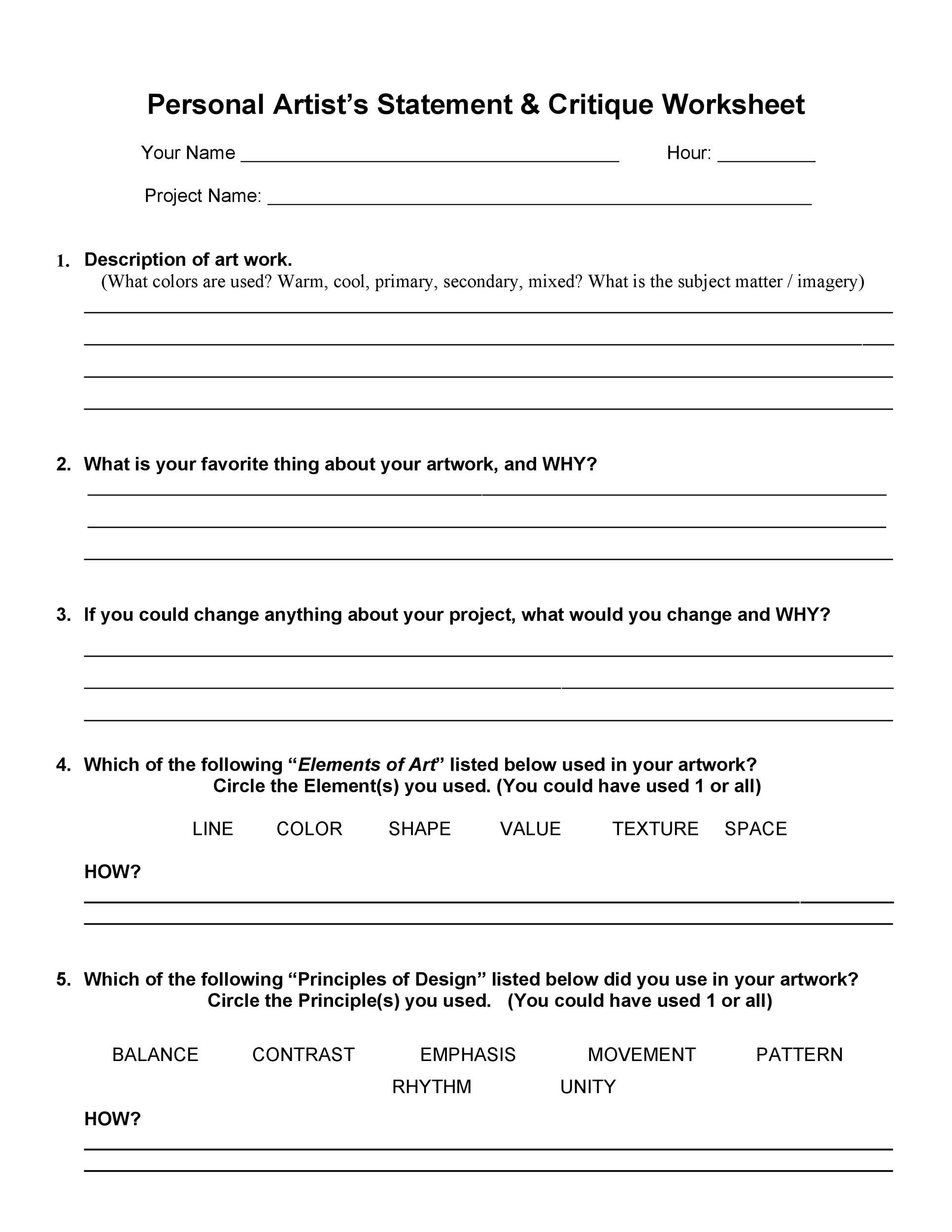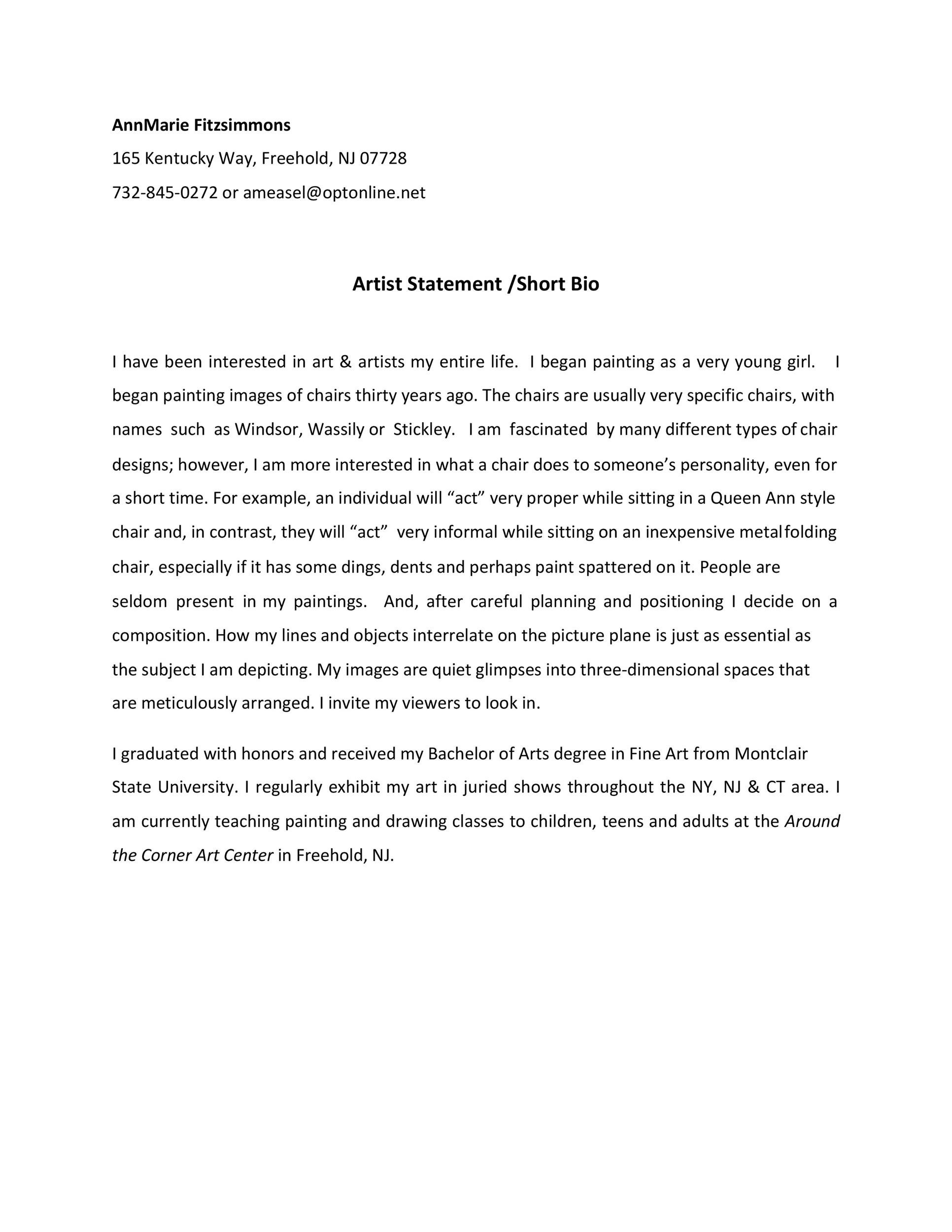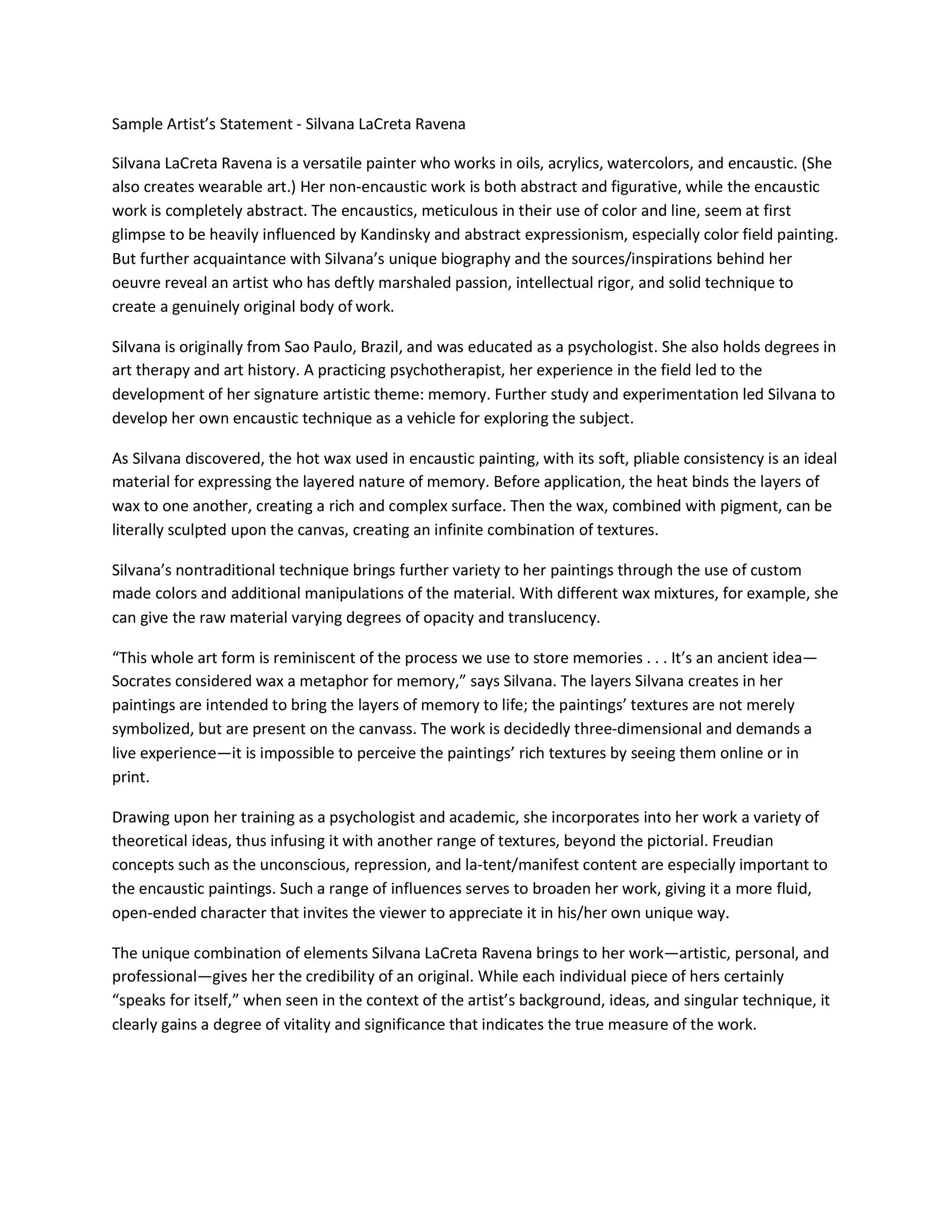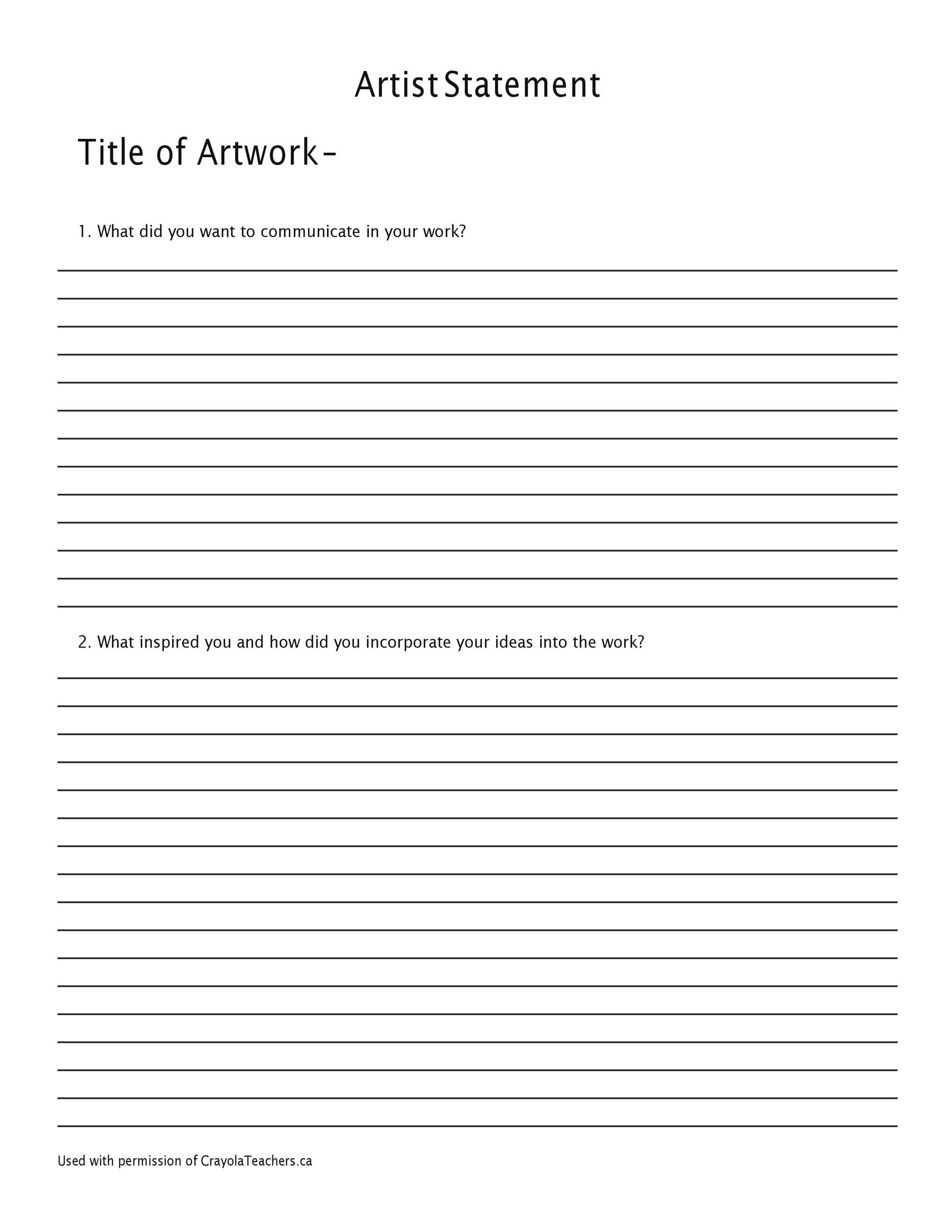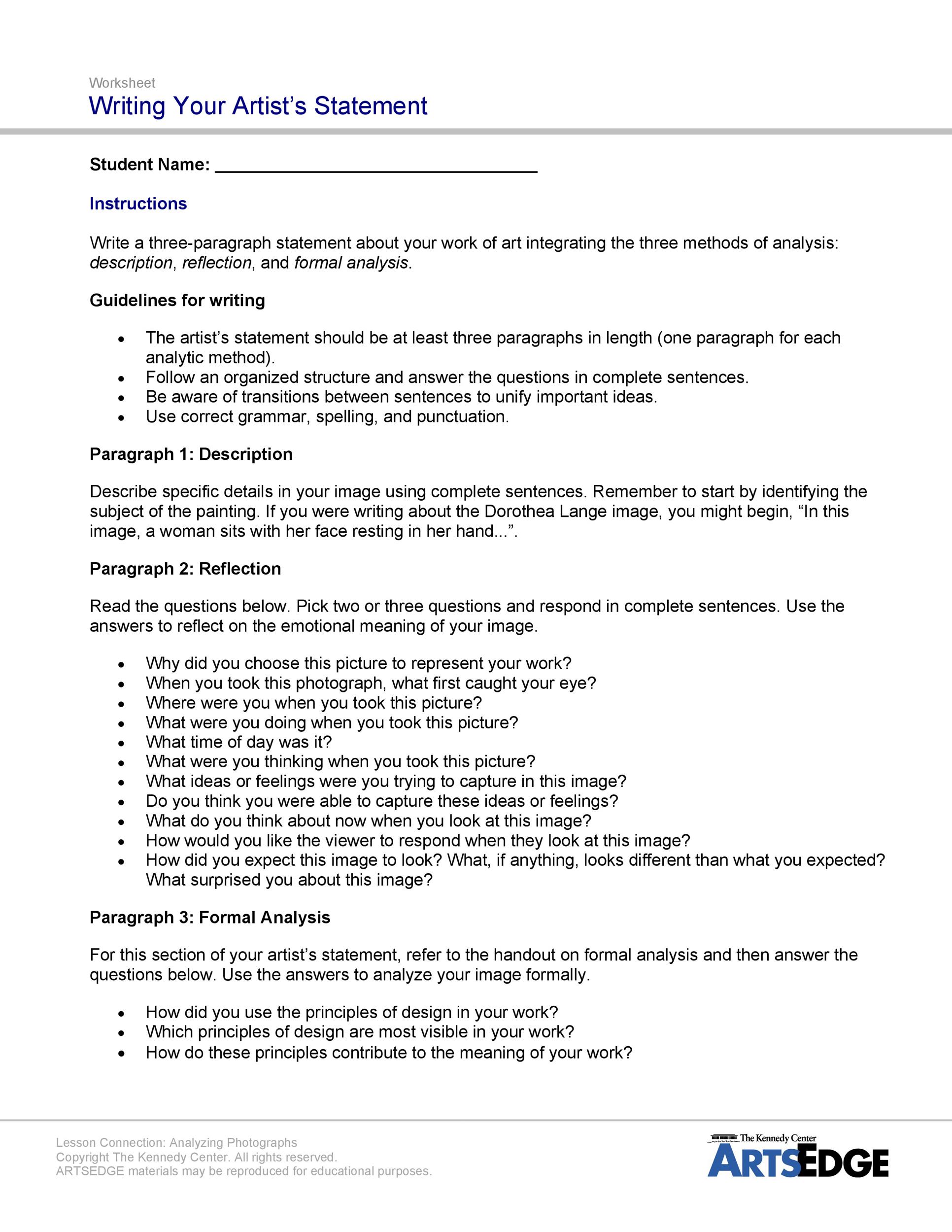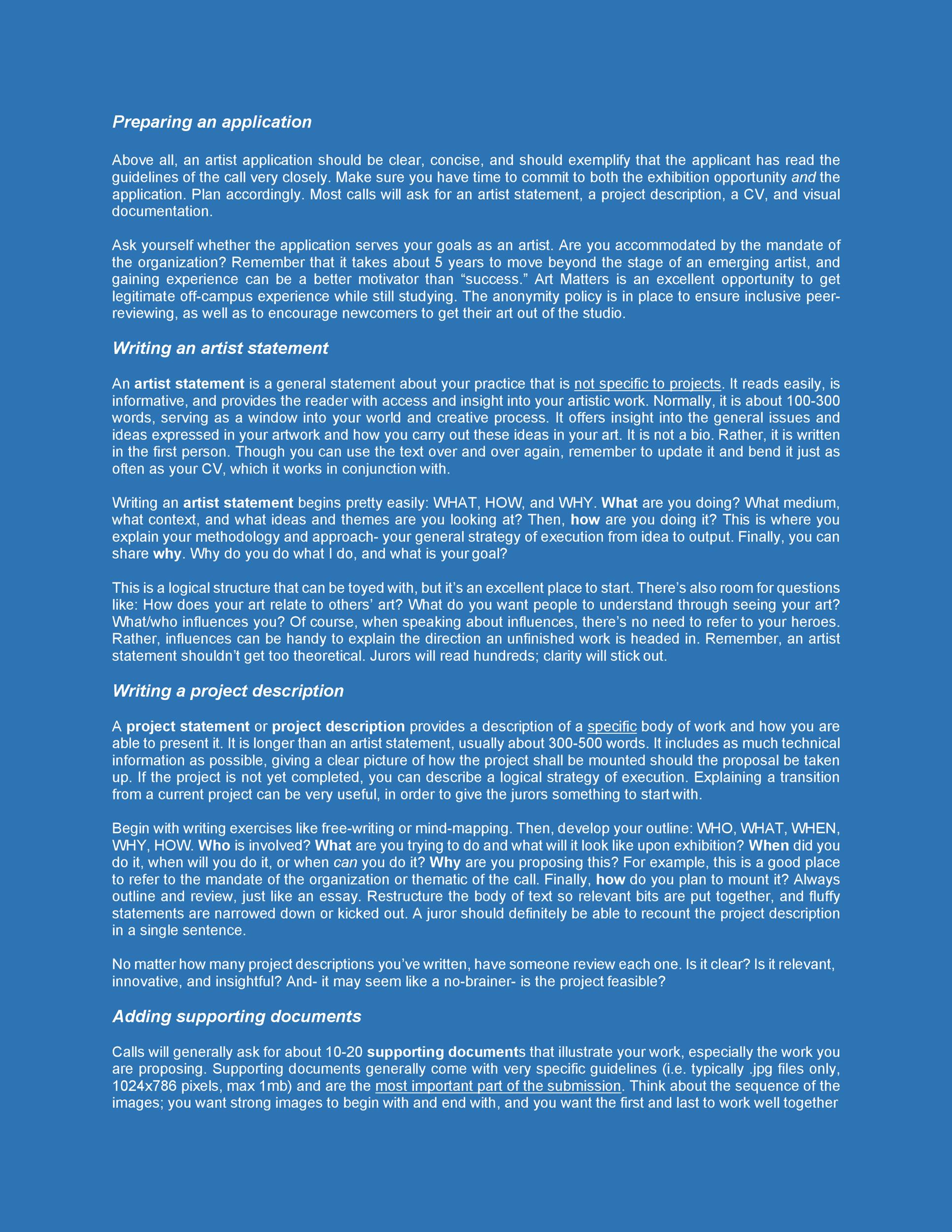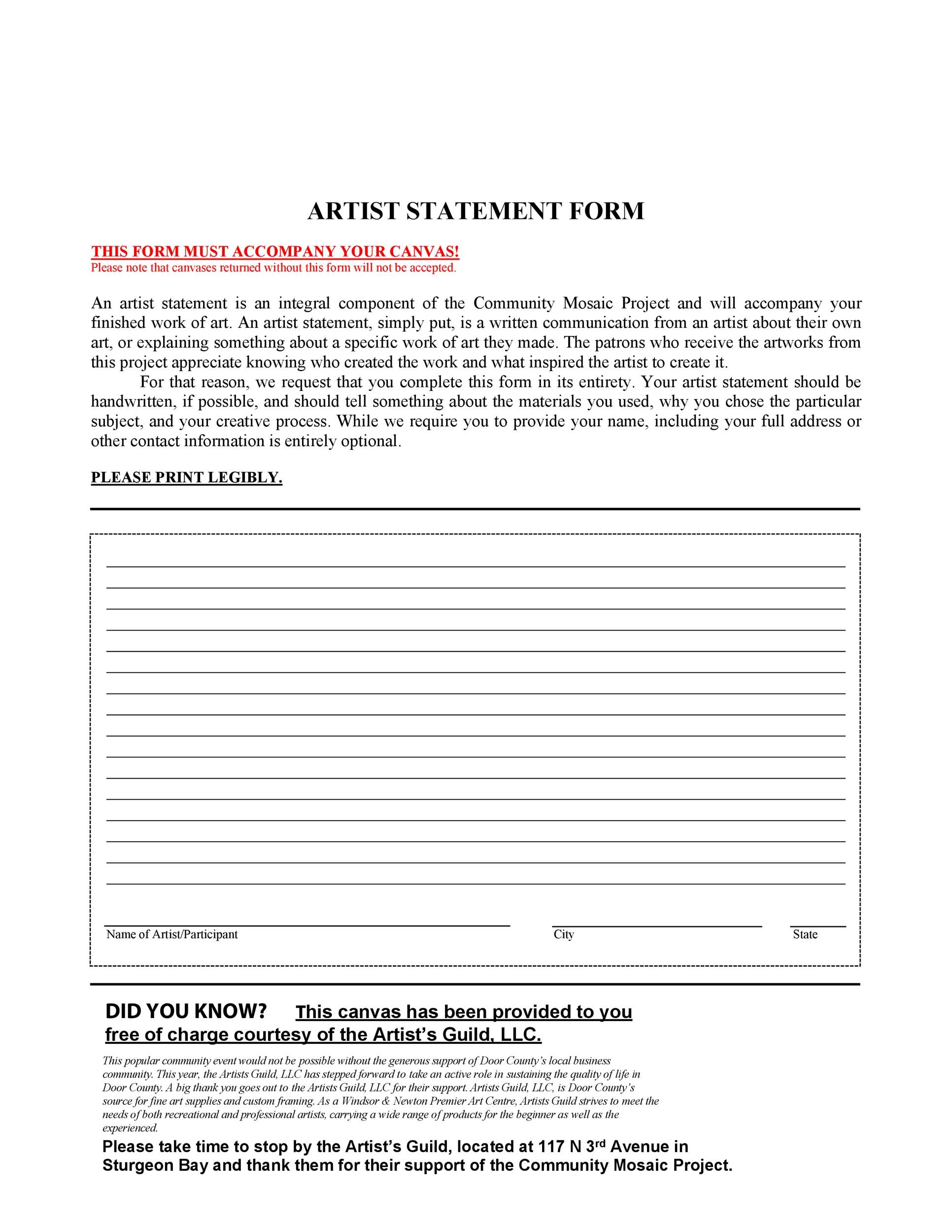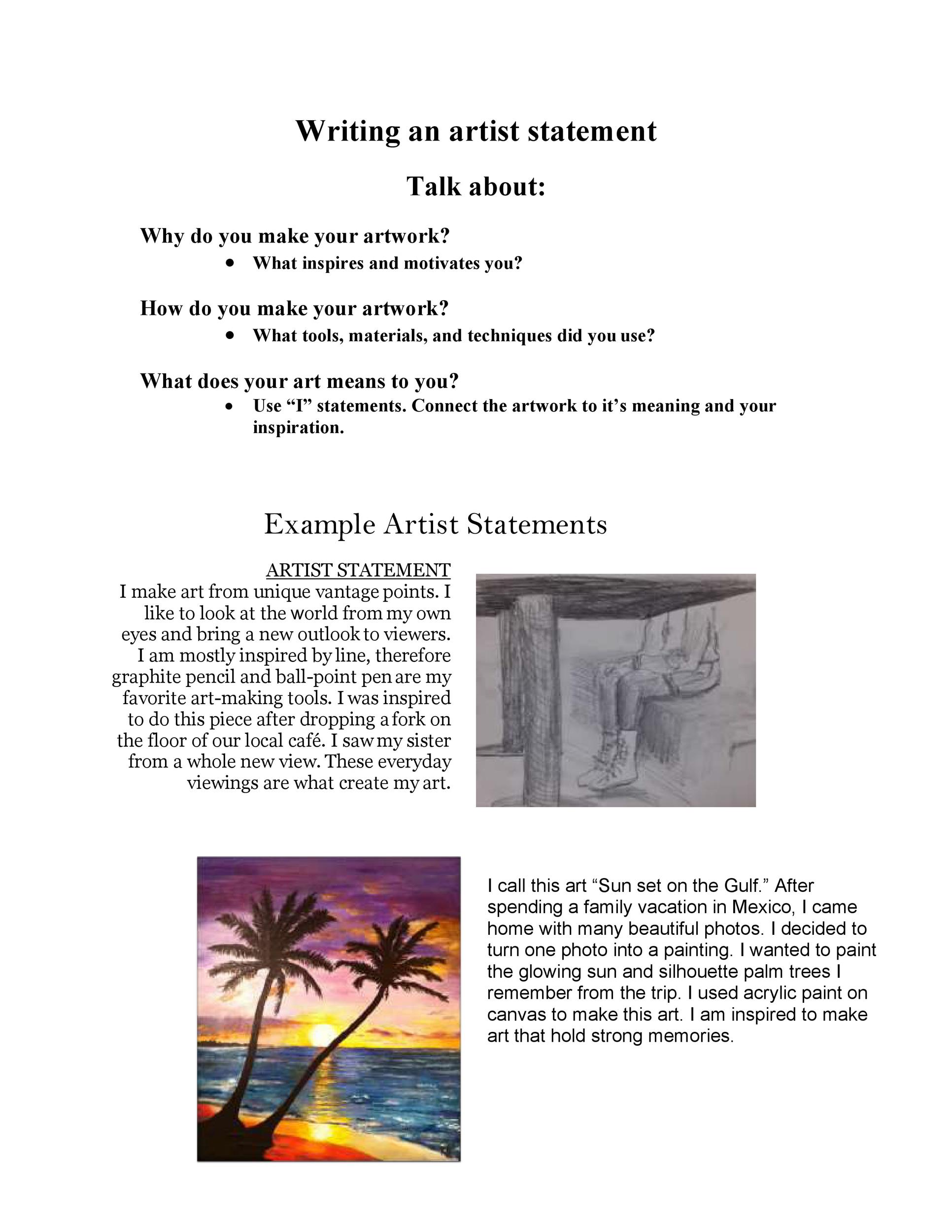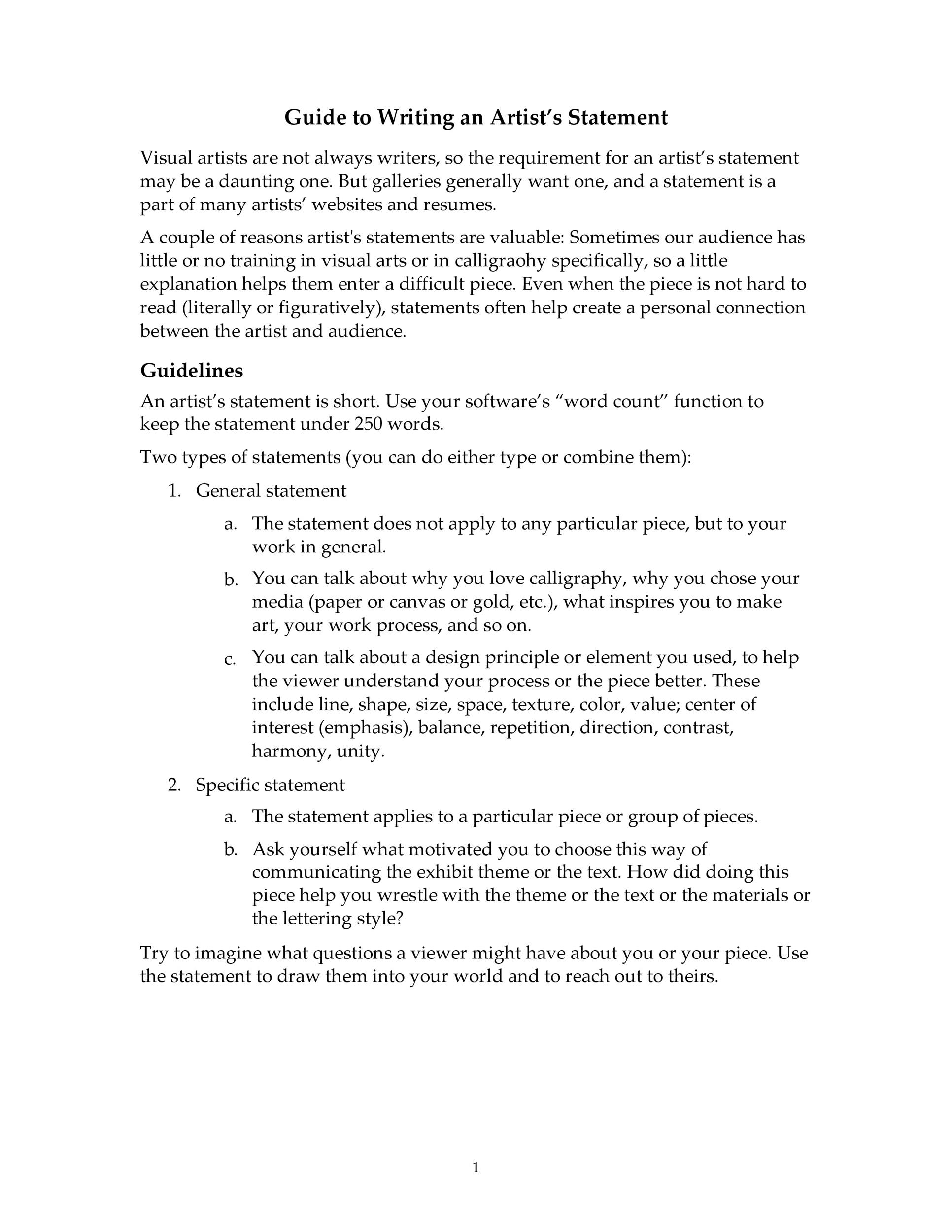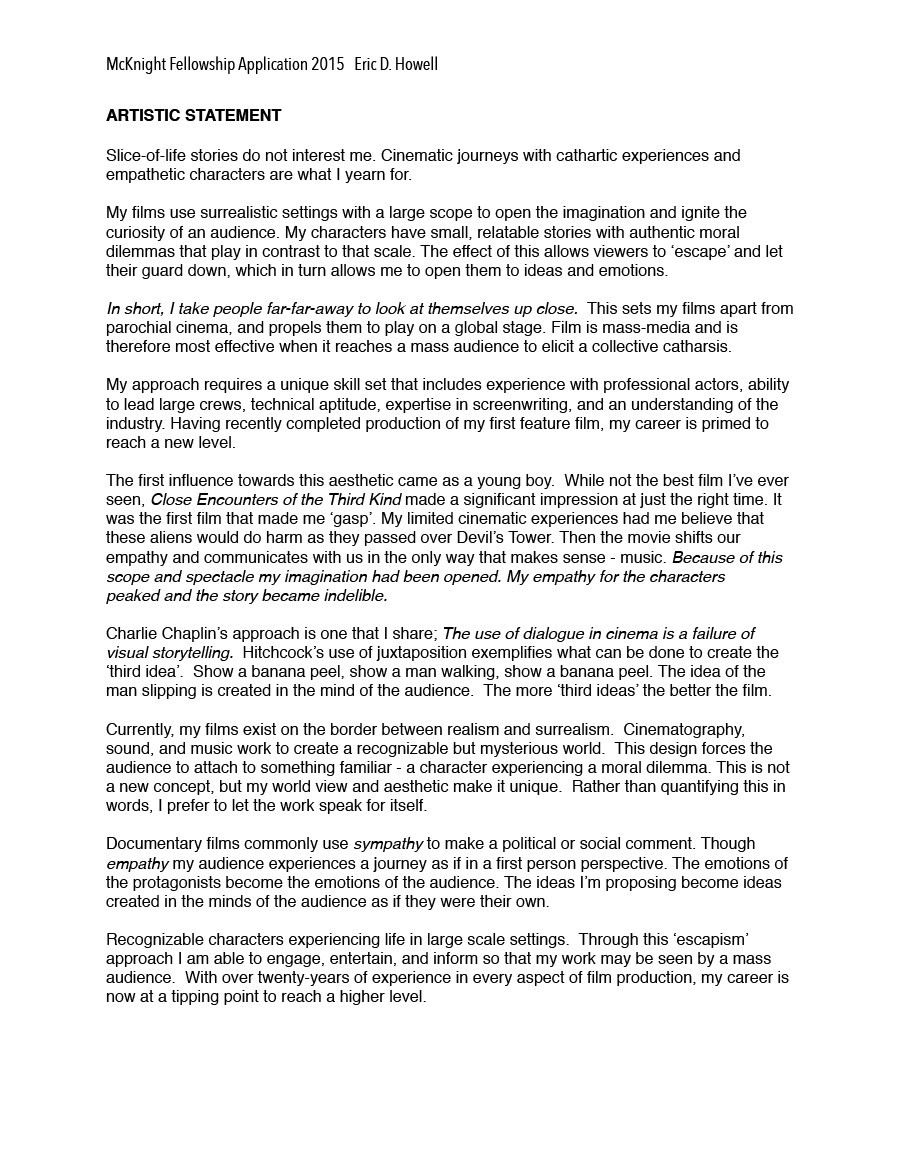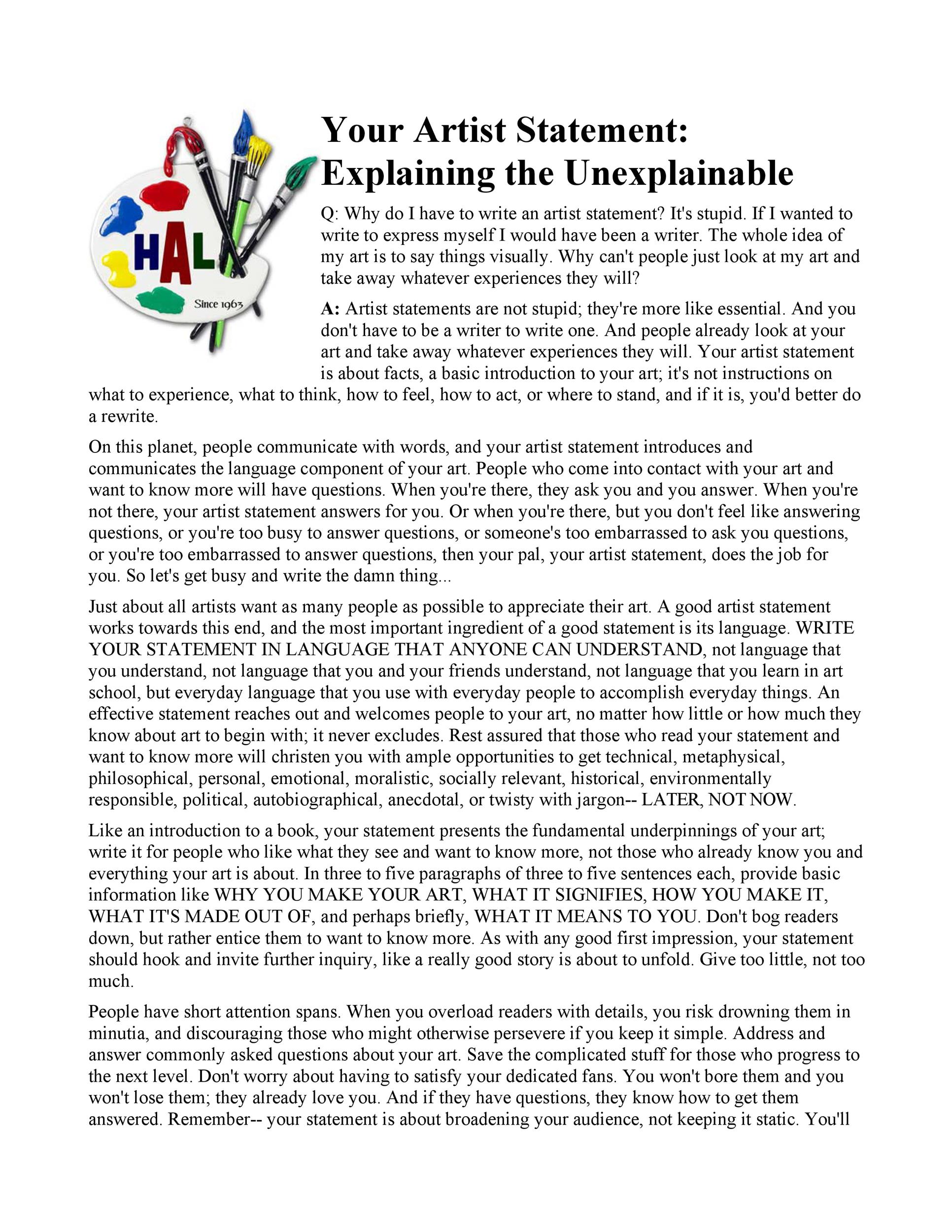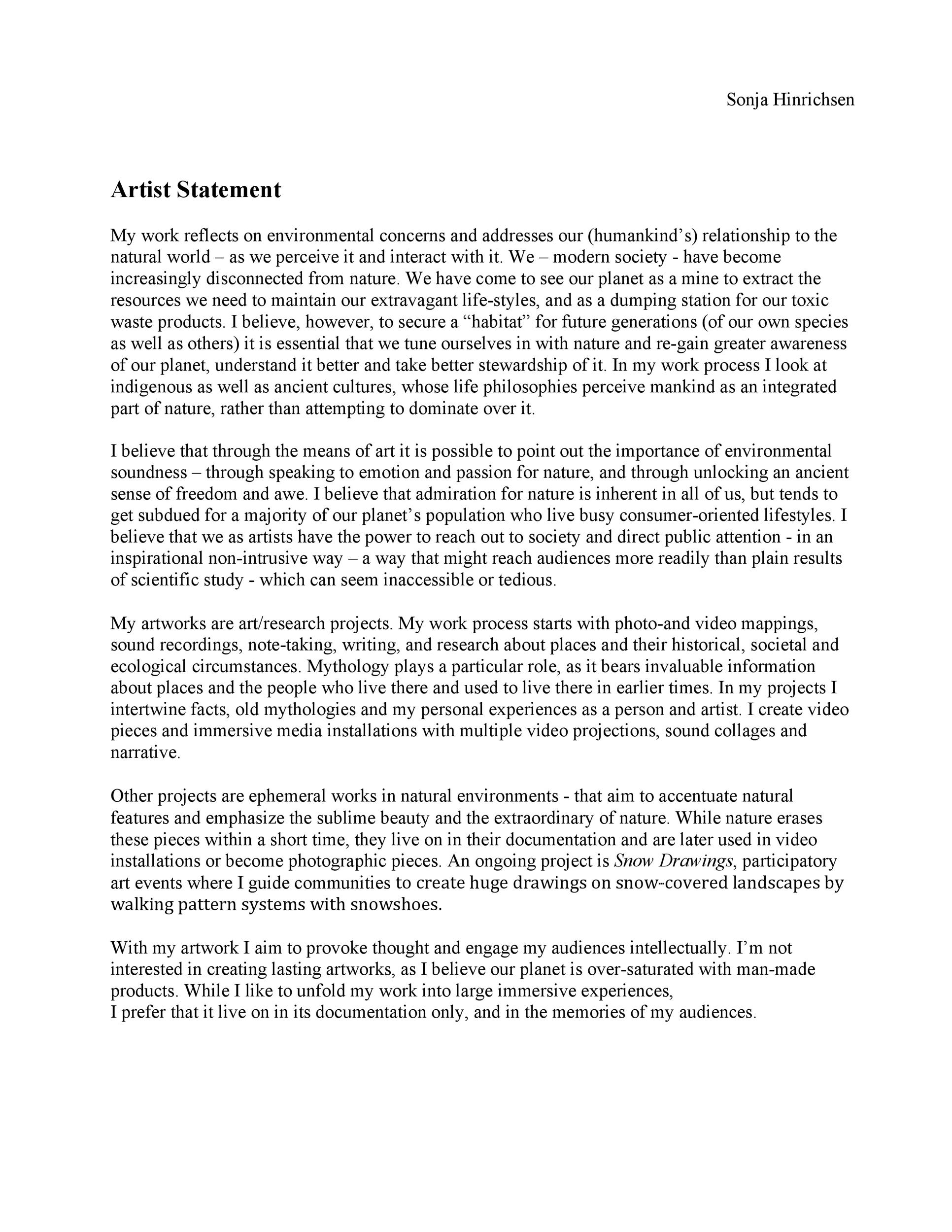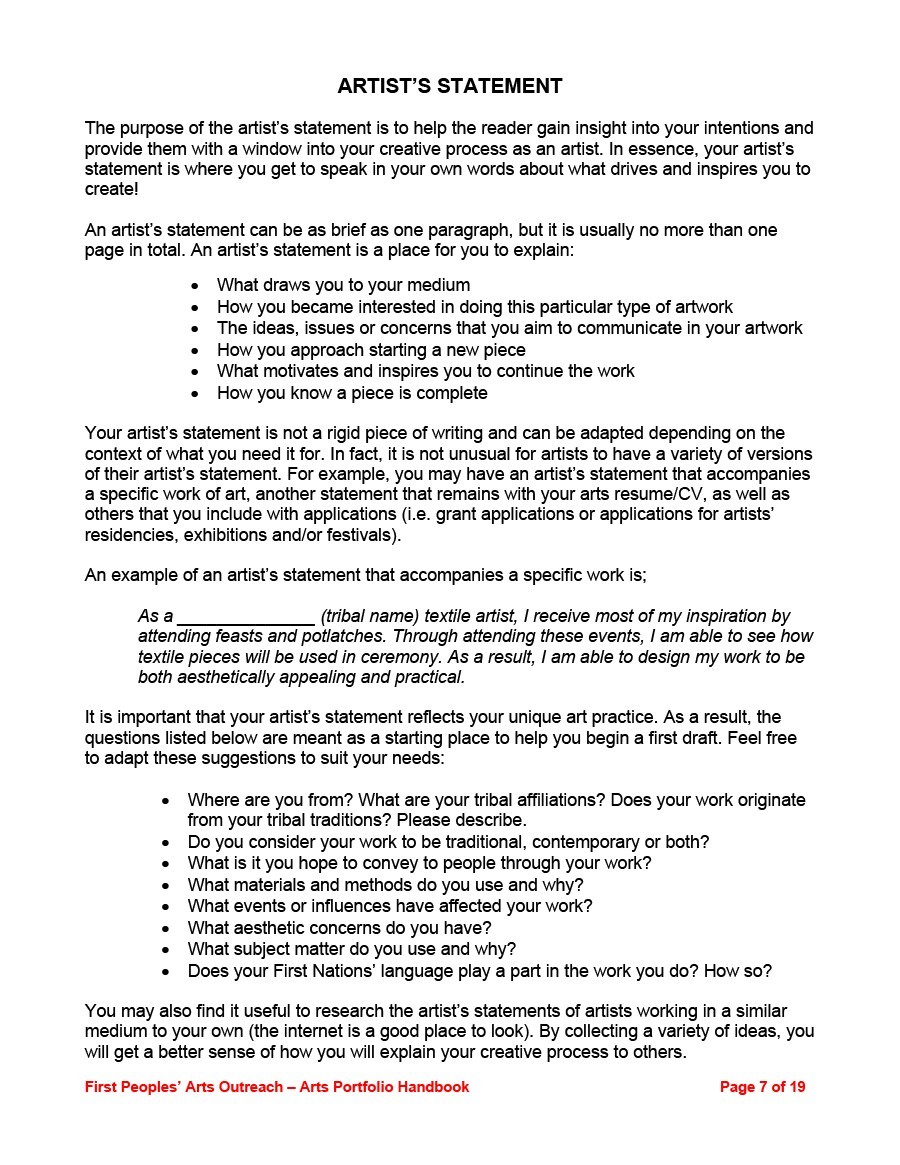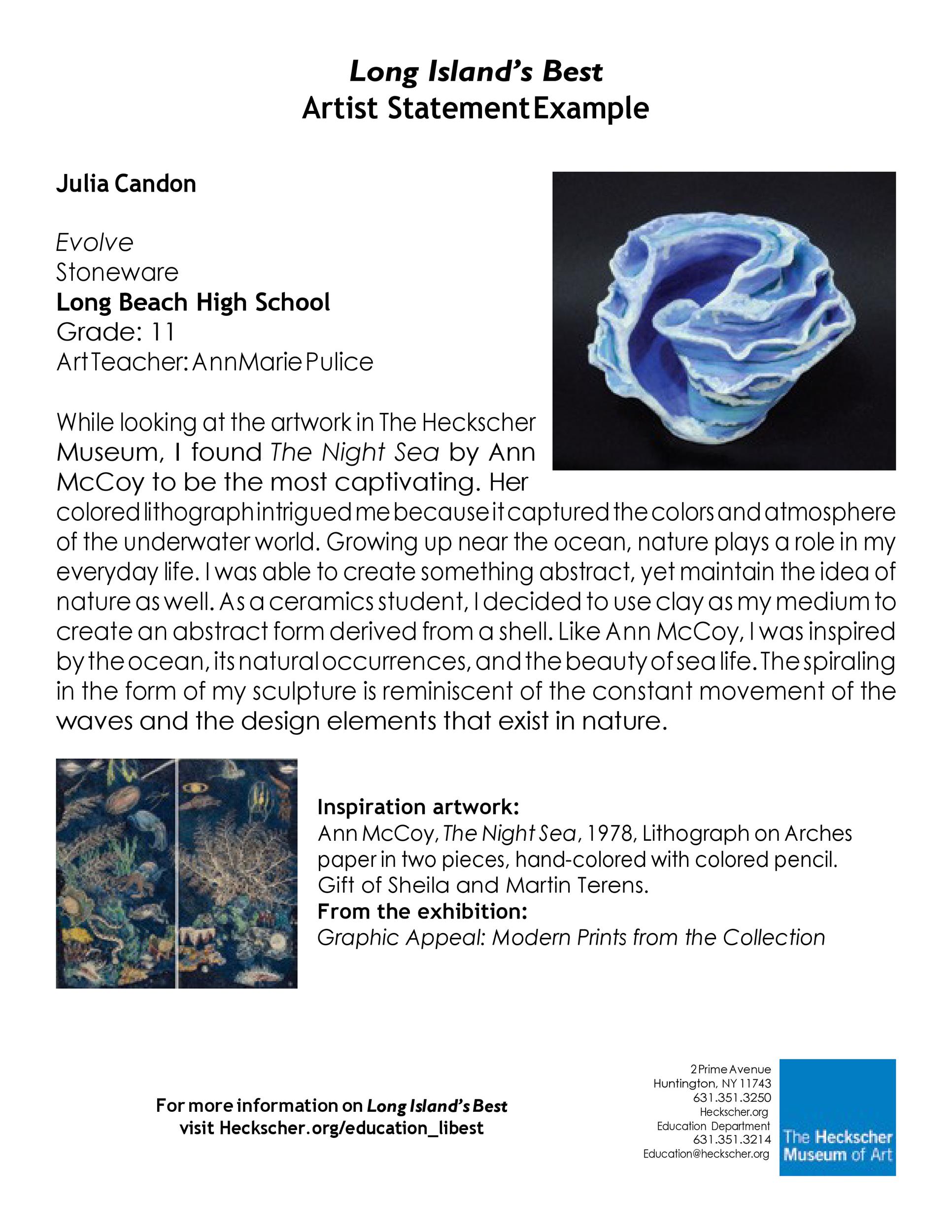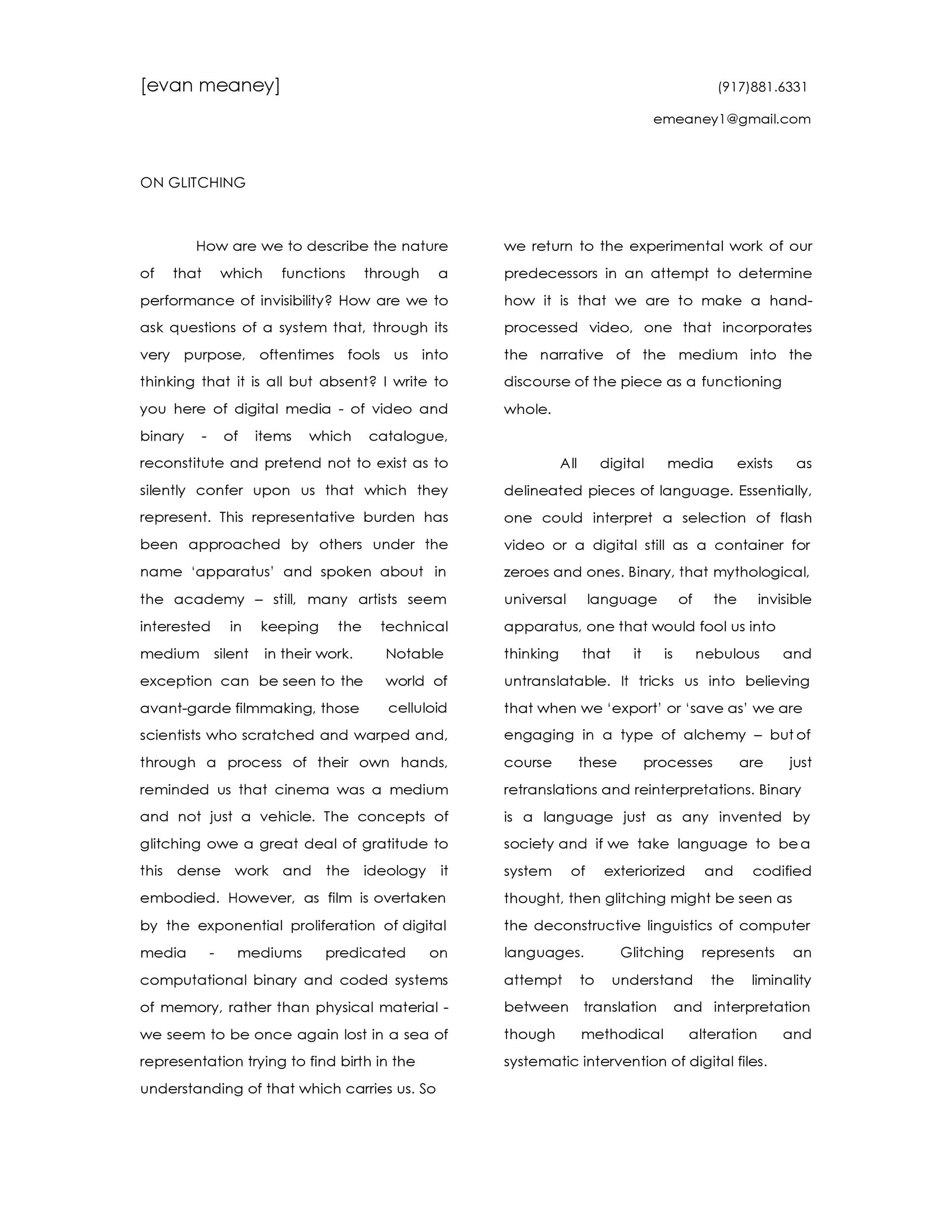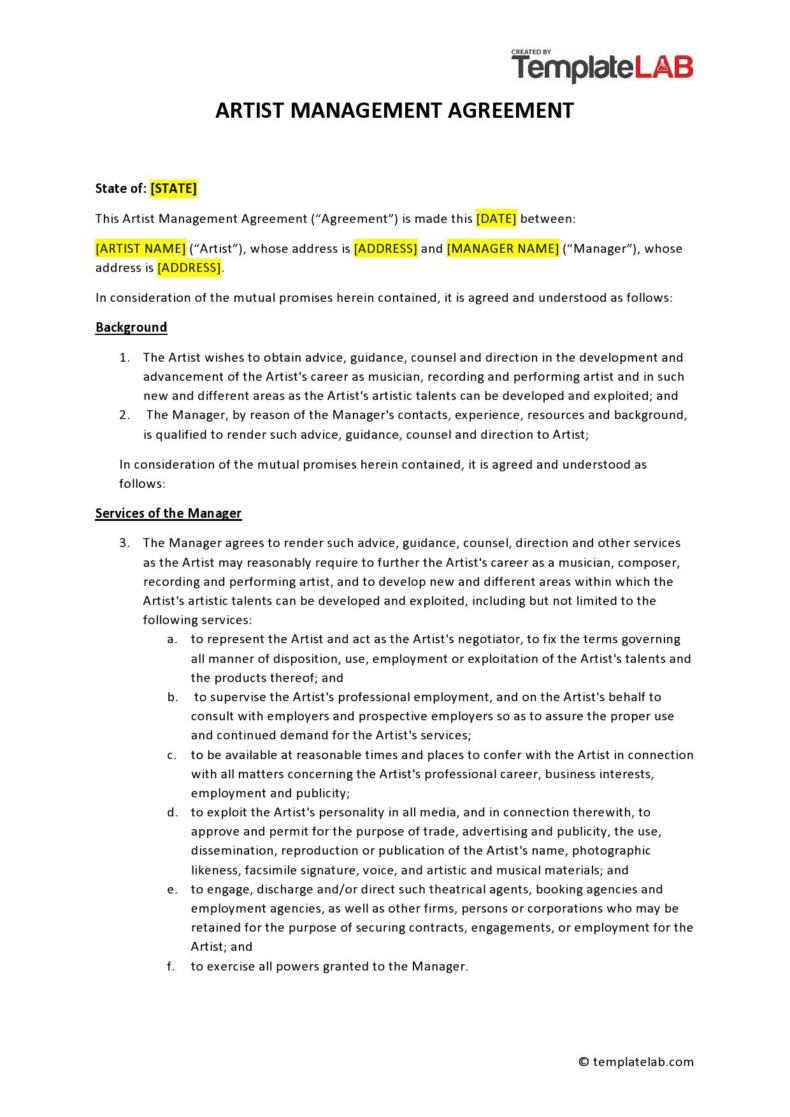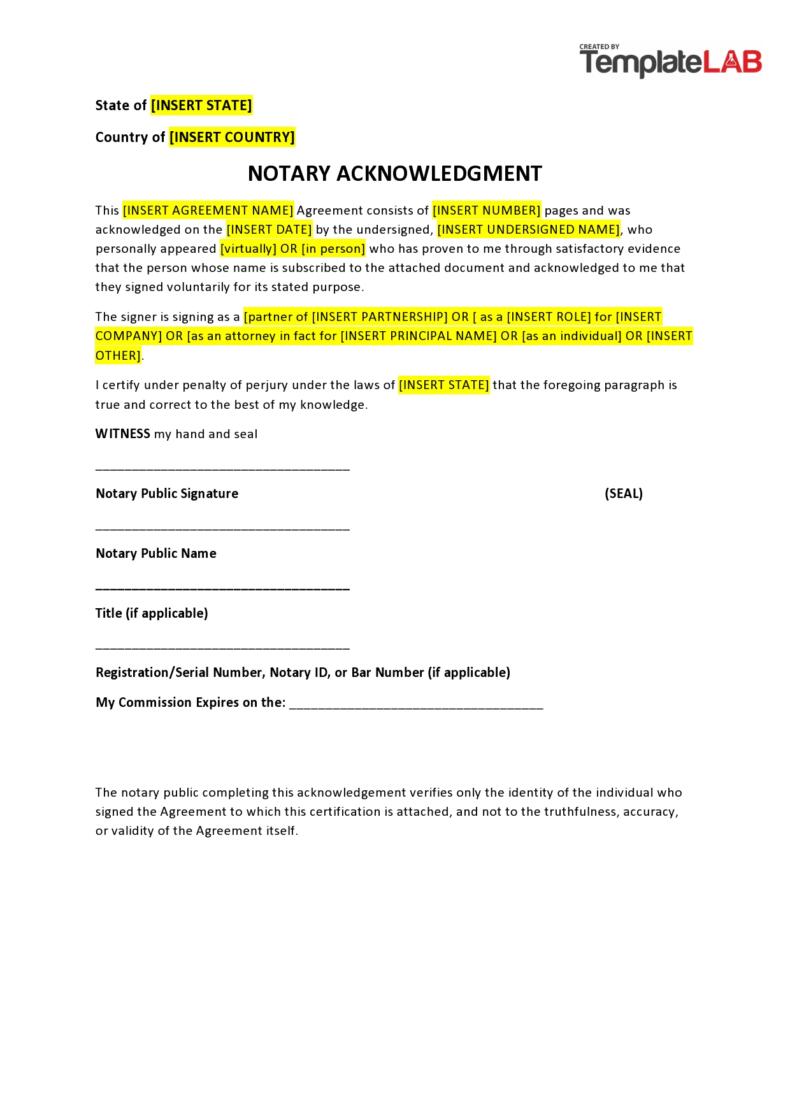An artist statement makes it easier for artists to explain their visual work using words. For artists, writing is a “necessary evil” for their portfolio, for grants, and more. An artist statement template has an important effect on how people see your work. Therefore, when you think about how to write an artist statement, make sure it’s compelling, not boring.
Table of Contents
Artist Statements
What does an artist statement contain?
An artist statement is a type of written document which introduces you as an artist. It contains an explanation of how and why you create your art. It also contains other interesting facts about yourself and your art. You can create an artist statement format about a single work or art or your whole body of work.
When you read different artist statement examples, you’ll realize that these have a lot of applications like for when you want to apply for jobs, schools, grants, fellowships, and more. Typically, an artist statement template contains:
- A couple of statements about your personal relationship with art and why you’ve chosen to become an artist.
- The medium you use for work, the tools you use, and if you work on your own.
- A description of your current work and why you chose to make your work the way you did. Also, explain what you work means to you and what you hope it would mean to those who look at it.
Artist Statement Examples
Why do you need an artist statement?
Before trying to learn how to write an artist statement, you may first want to find out why you need one. It’s important to create short artist statement examples if you want to practice. Include a brief description of how you work and what your work means.
The best artist statements are no longer that one page. In fact, some artist statement examples can only be as short as a hundred words! Here are some reasons why you need to create your own artist statement format:
- It’s a great way to clarify your own thoughts and ideas about the work you created.
- It serves as a description of your work written in your own words for the benefit of the public and of reviewers too.
- You can use it as a part of your proposal for a project or an exhibition.
- You need this document when you apply for a grant, for graduate school, and more.
- It’s a great reference for someone who would talk about or write about you and your work.
- It’s useful when someone writes a press release for you.
These are the most basic reasons why you need this document. There are a lot more reasons depending on your situation and on your needs. But as you can see, an artist statement template is really important!
Types of artist statement
The next thing to think about before writing your artist statement is the type of statement to create. This depends on what you’re writing about and on the message you want to convey to your audience. Here are the different types for you to consider:
- Full-Page
This is the most frequently used type of statement. Use this if you want to speak generally about yourself, your work, the methods you use, your history as an artist, and so on. In this type of statement, you can also include a few specific examples of your current project or work. - Short
This is the same as the full-page type but you write everything in an abbreviated way. Therefore, you must compose the statement using specific sentences to describe your project or work. - Short Project
For this, you only write a very short statement about the specific work or project you plan to present. - Bio
This type includes a short description of yourself, your artistic career, and all of your major accomplishments.
Artist Statement Templates
Tips for writing your own artist statement
Writing an artist statement can be both fun and challenging. Trying to come up with words to describe yourself and your work forces you to think about yourself more and about the work you have created. This, in turn, may lead to new ways of thinking so that you can move forward as an artist.
If you plan to write a short artist statement example worthy of the art you create, then you must learn how to do this properly. Although there’s no standard artist statement format, you must include all of the essential elements. To help you out, here are some tips:
- Create a mind map
The first step is to come up with an overview of all your work. If you miss this step, you might end up overarching which might make you miss your connection to your audience. Mind maps are simple, easy to create, but highly effective. Set aside some time to create this mind map to make your artist statement more comprehensive. - Have an interview with yourself
If you find yourself stuck while making your mind map, you can also try interviewing yourself. You may also ask a friend to interview you to make it easier for you to find the right words to describe yourself as an artist and your work too.
Before your interview, make a list of important, relevant questions. Then you can answer them as naturally as you can. Doing this also gives your statement a more conversational tone which is a lot more appealing to readers. Here are some sample questions to start you off:
Who are your readers?
Who are your artistic influences?
Can you explain your work to a small child?
How do you create your work?
How do the materials you use, convey your work?
What makes your work unique? - Create an outline of all the important information
When you work with big concepts and ideas, it’s easy to slip into abstract thoughts. Then you start composing a statement which encompass your big ideas but which aren’t specific enough. Using words like democracy, success, love, and words which contain “-ism” isn’t the best idea.
Although it’s okay to use abstract terms sparingly, it’s better to use concrete concepts and ideas. To express these, you need terms which represent them. You should understand how imprecise the meanings of your concepts are, how they can be easily understood in different ways, and how using abstract terms to describe them might put off your readers.
Come up with an outline of all the relevant information and be as specific as you can. Create your initial list to serve as a framework of your statement. When you state the required information clearly, this makes your writing more concise. - Try to avoid using jargon as much as possible
As much as you’re able to understand the jargon and other technical terms, you must try to avoid using these in your statement. Avoid using fanciful words which aren’t necessary to the rest of the content. Although some artists feel like they can “legitimize” their statements by embellishing the language, you might get the opposite of the effect you want.
The more you use jargon, the more you come off as insecure. Instead, you may want to use simpler, more direct language to make your readers feel interested in what you have to say. Such language may make your readers feel more excited about you and your work.
Of course, this doesn’t mean that you should dumb down your work either. Find the right balance between academic language and simple terms to come up with a statement that’s interesting, easy to understand, but profound too. - Always use the “active voice”
This allows you to accomplish a couple of things. For one, it helps you create a statement that’s brief and concise. Also, it keeps your work in the present. Using an active voice makes your statements feel current, urgent, and important which is very beneficial when you’re applying for jobs or grants.
Compared to the passive voice, and active voice makes it seem like your project is currently happening instead of it being something which you’ve already achieved. You can use online tools to help you check whether you’ve used passive statements in your document. - Proofread your work
An artist statement is a very important document so you must proofread it before finalizing. Scrutinize your statement after you’ve composed it and check for any grammatical or spelling errors. After checking your statement, print it out and allow a few more people to check your work for you.
The more people proofread your work, the more you’re able to catch all the errors on it. Only after a few people have proofread your work should you print it out, email it or submit it. - Come up with different versions of your statement for various opportunities
Finally, you should come up with different versions of your artist statement to submit to different people or organizations. The style and tone of each statement depend on where you plan to submit it. Since this document isn’t supposed to be a lengthy one, creating different versions shouldn’t be too difficult.

